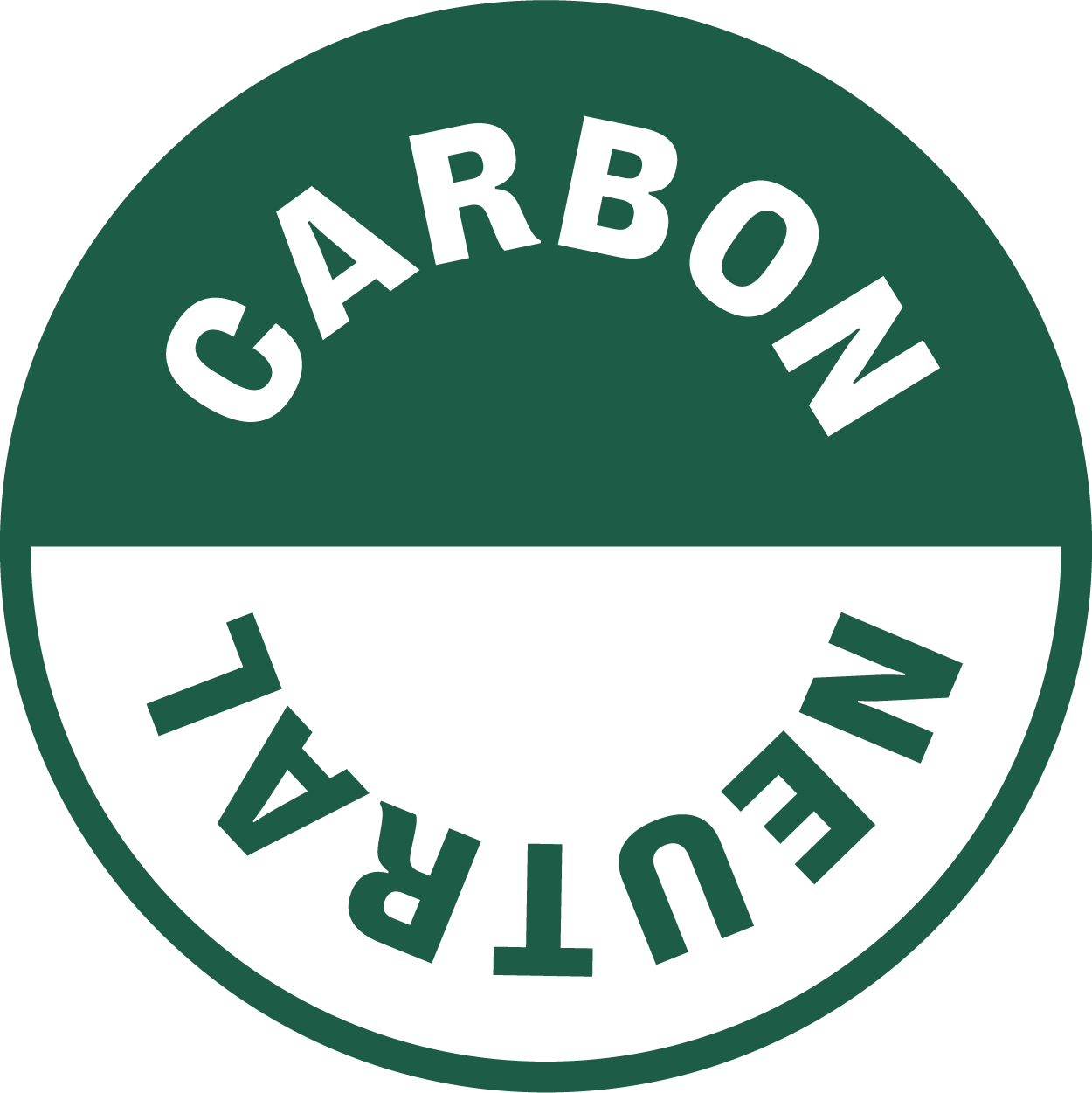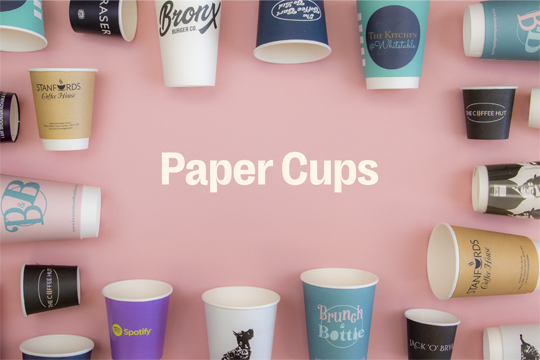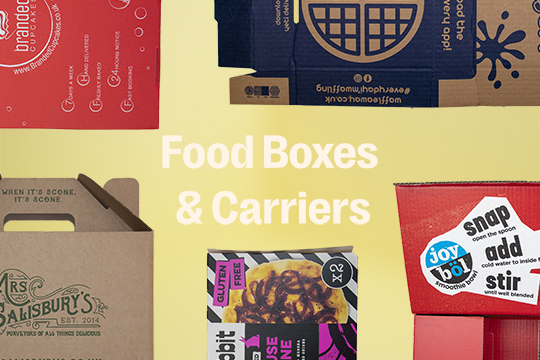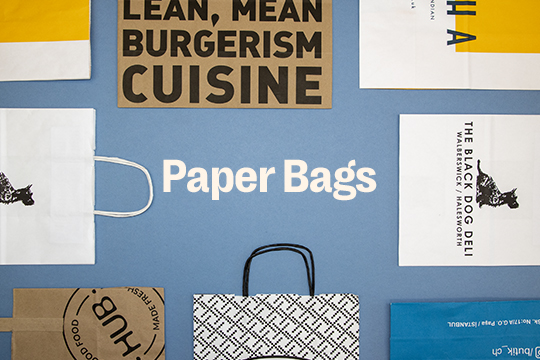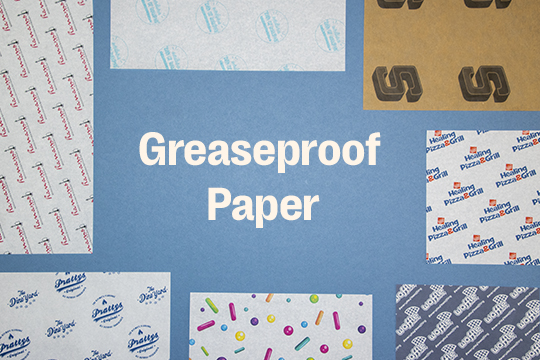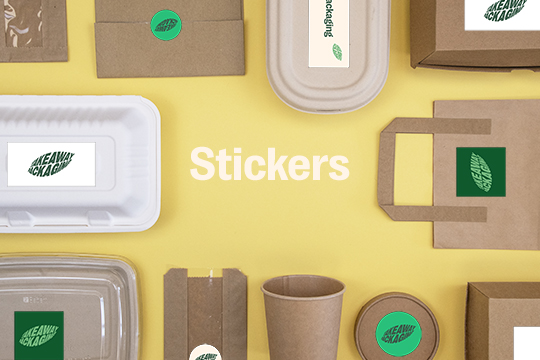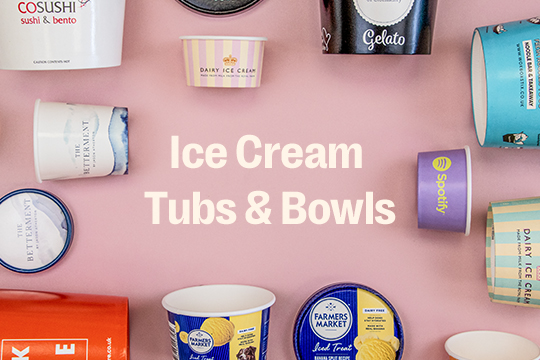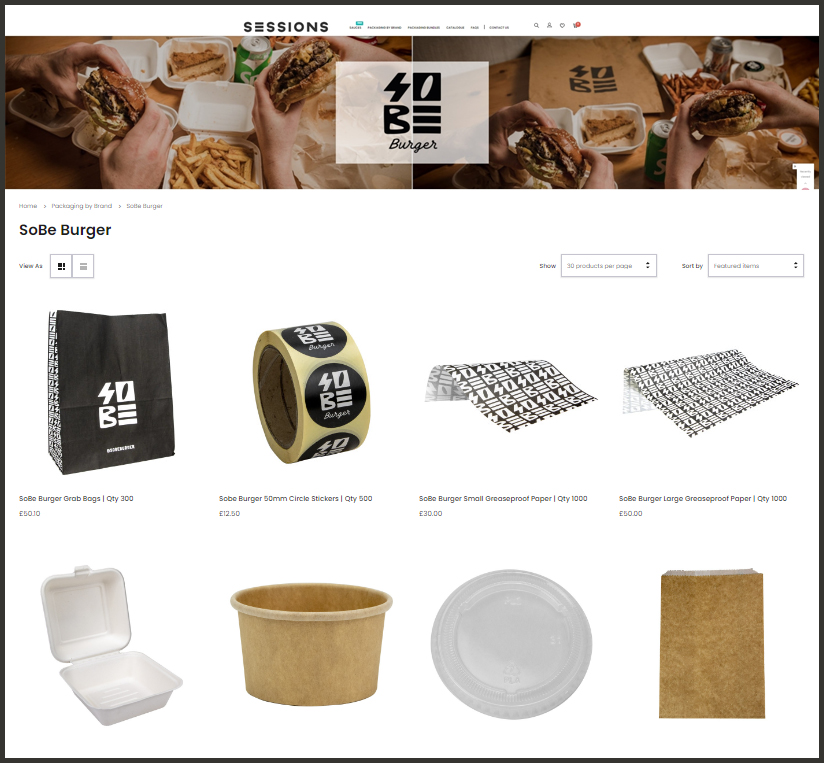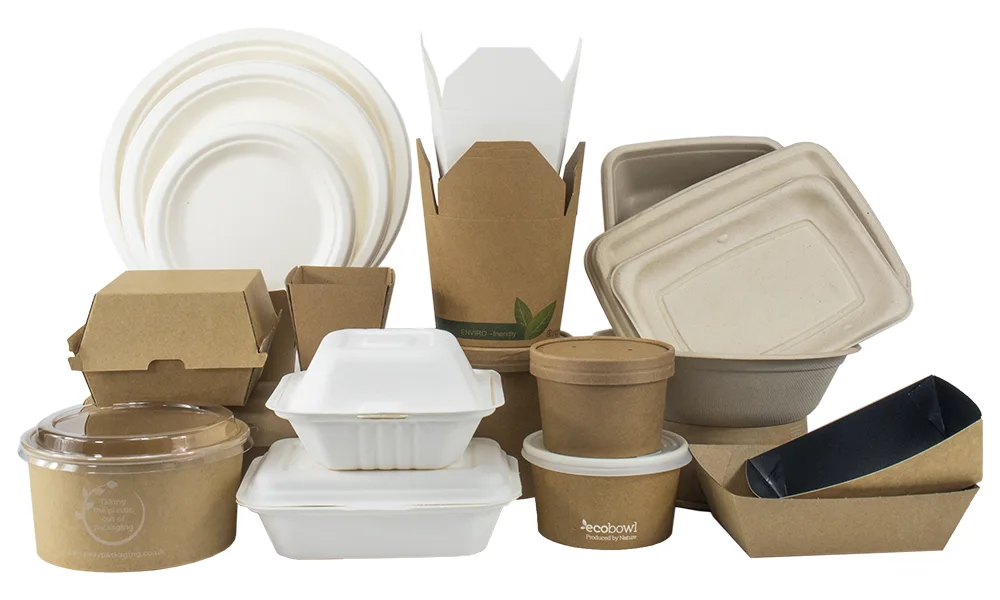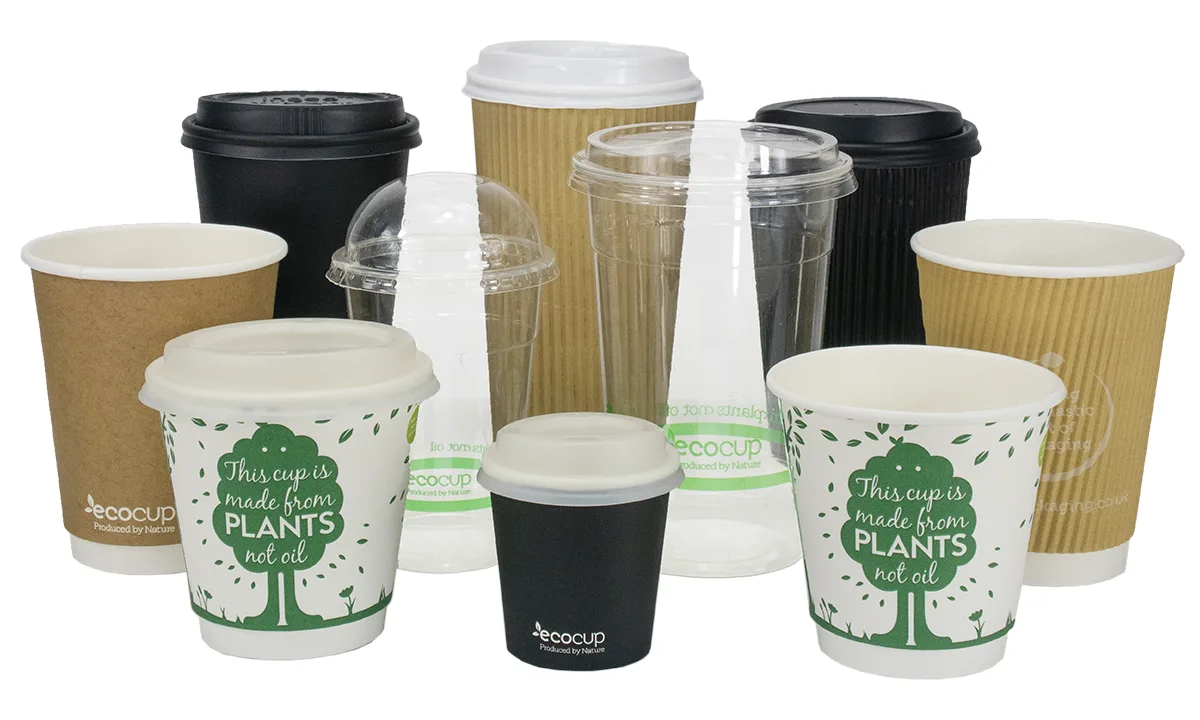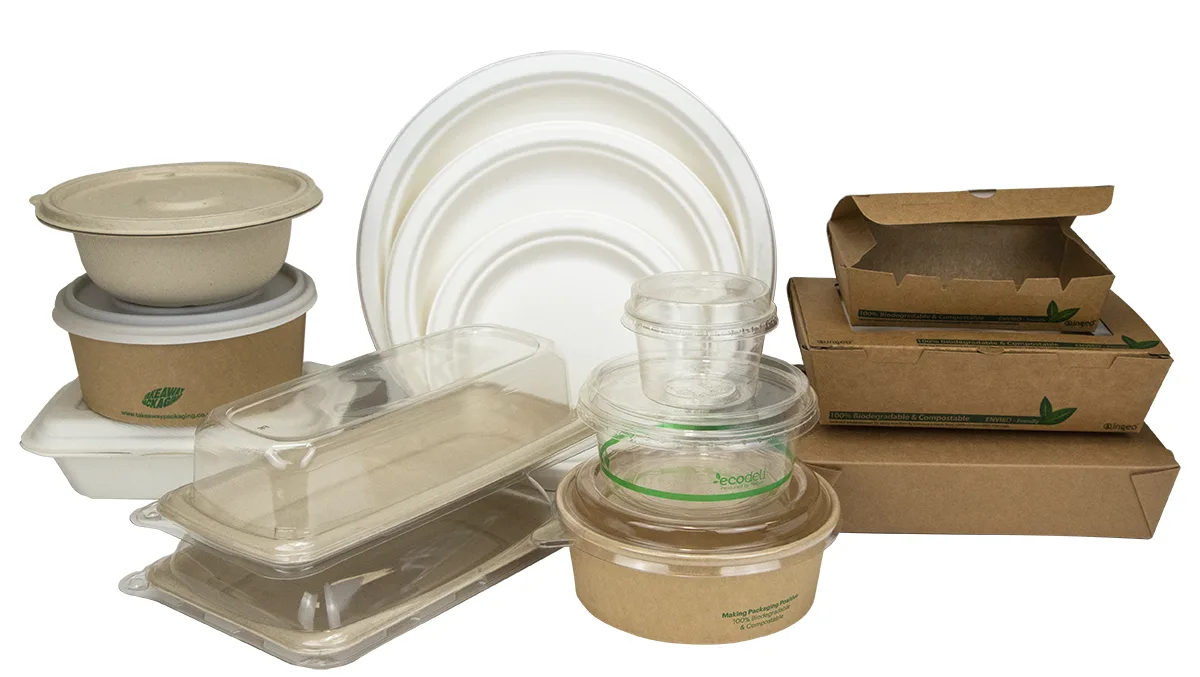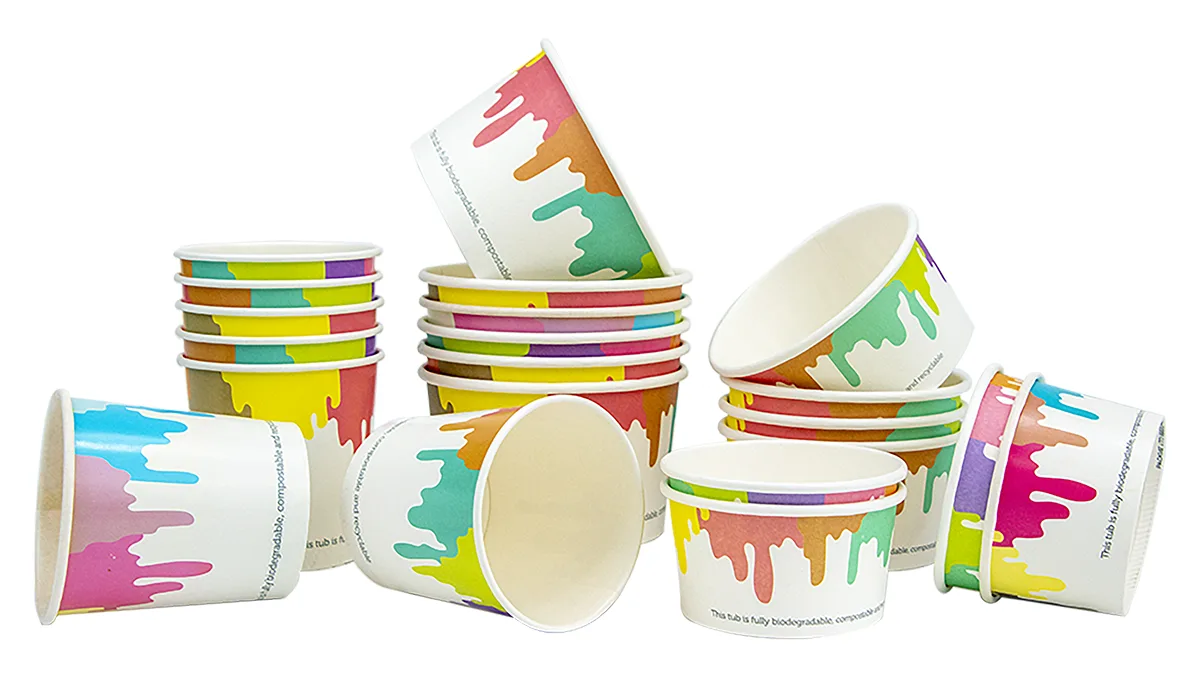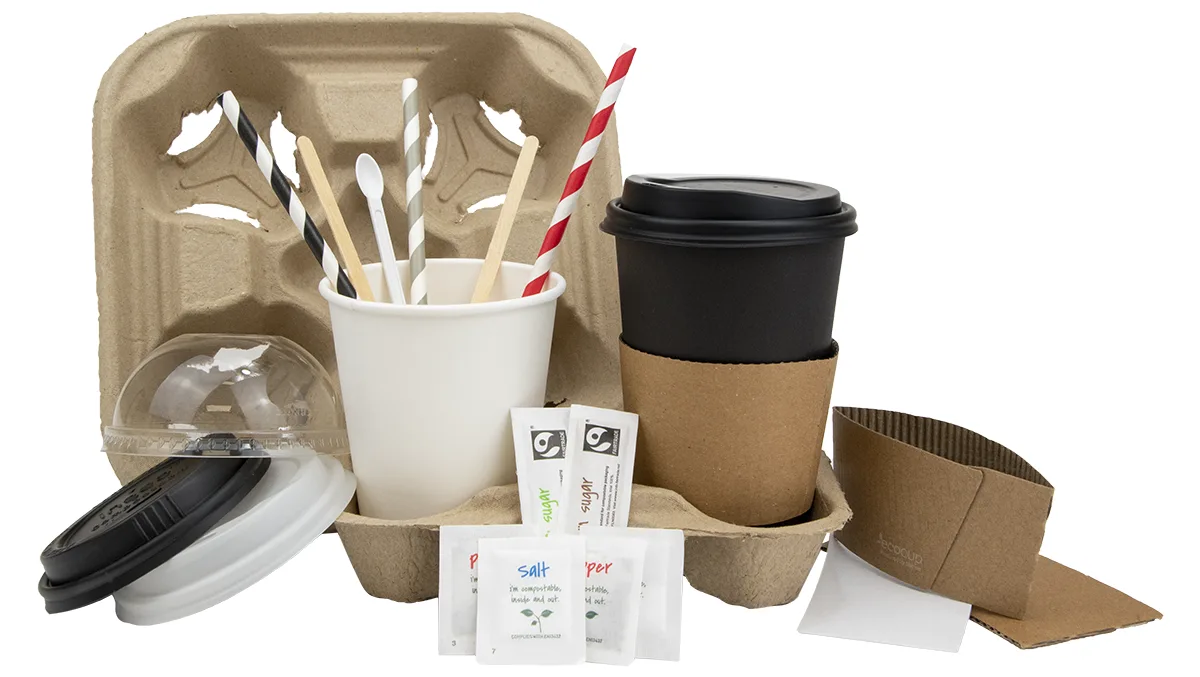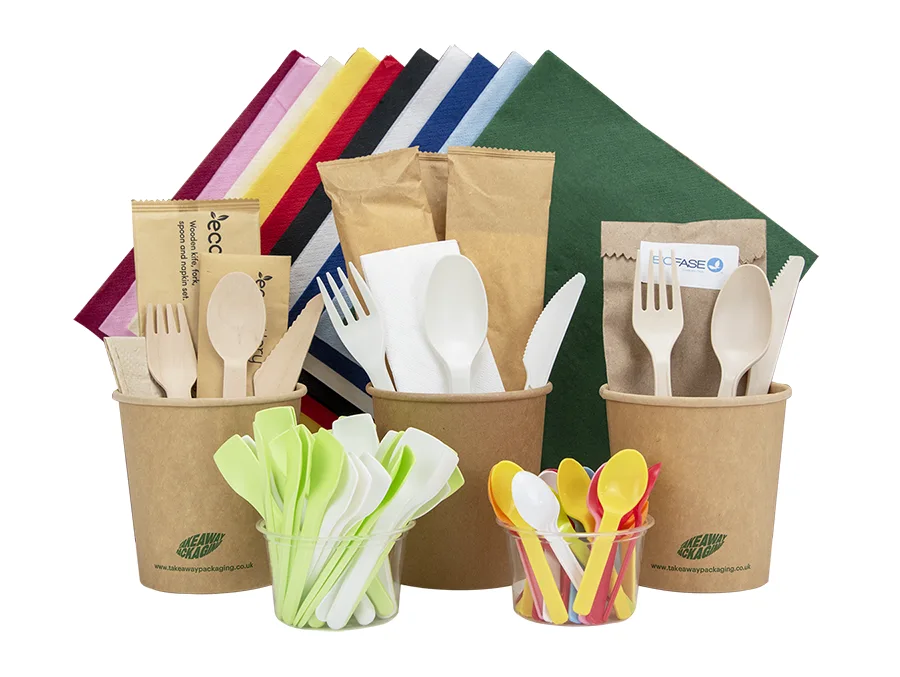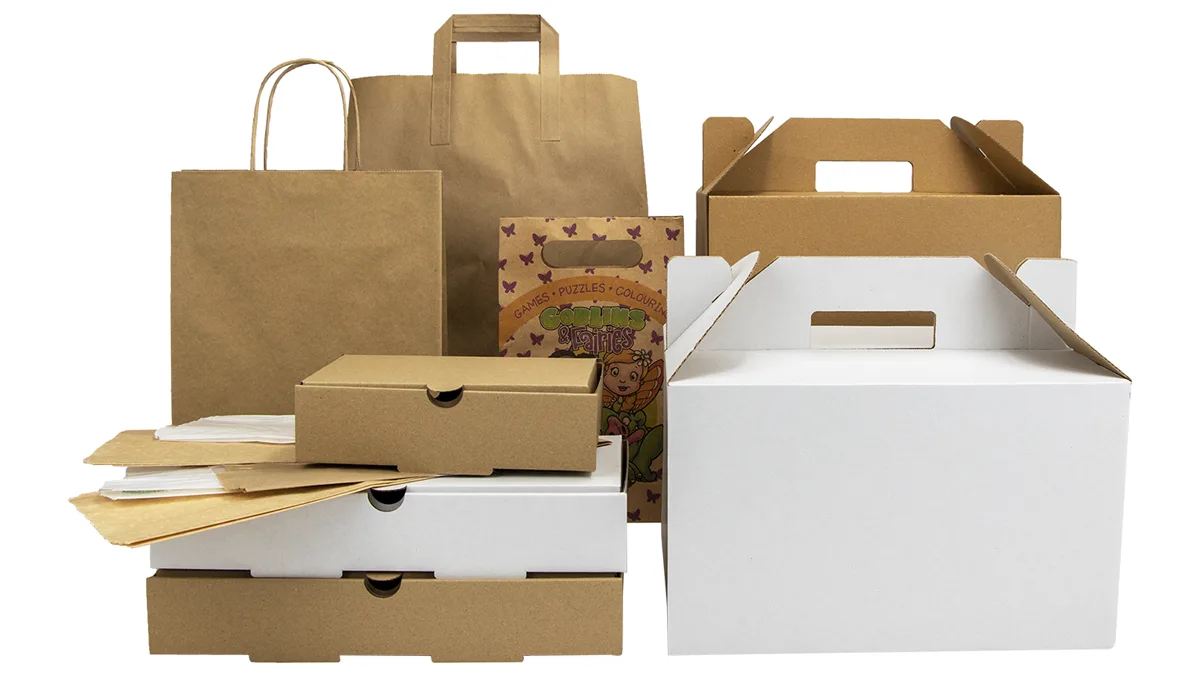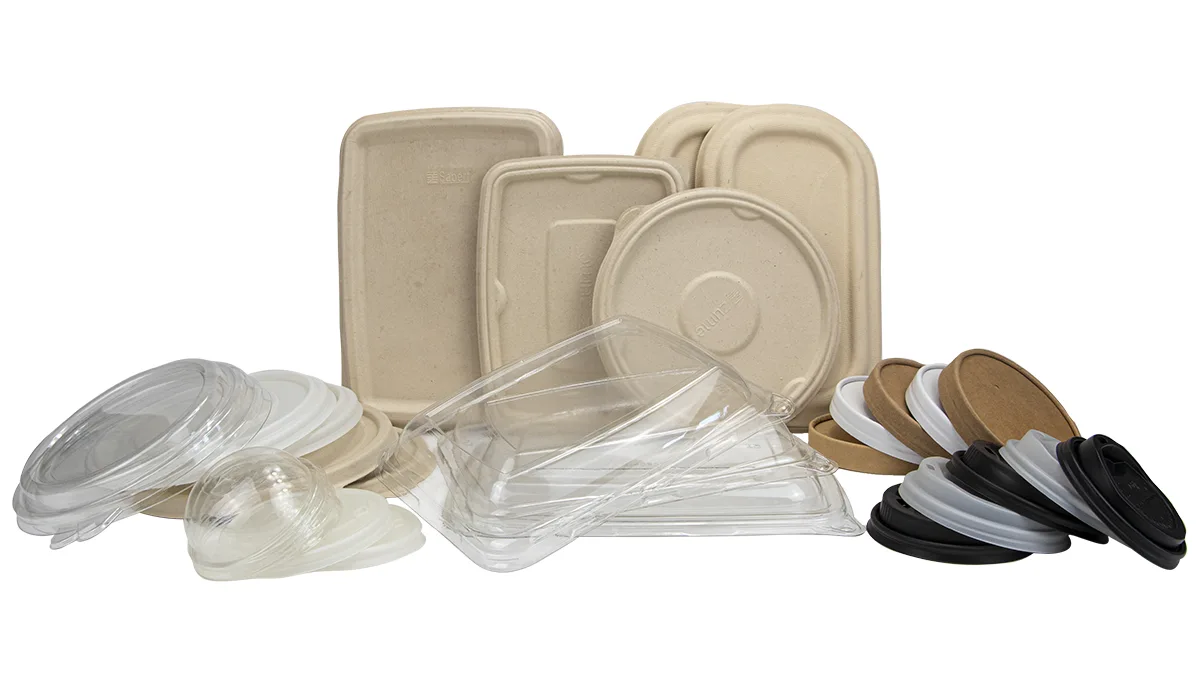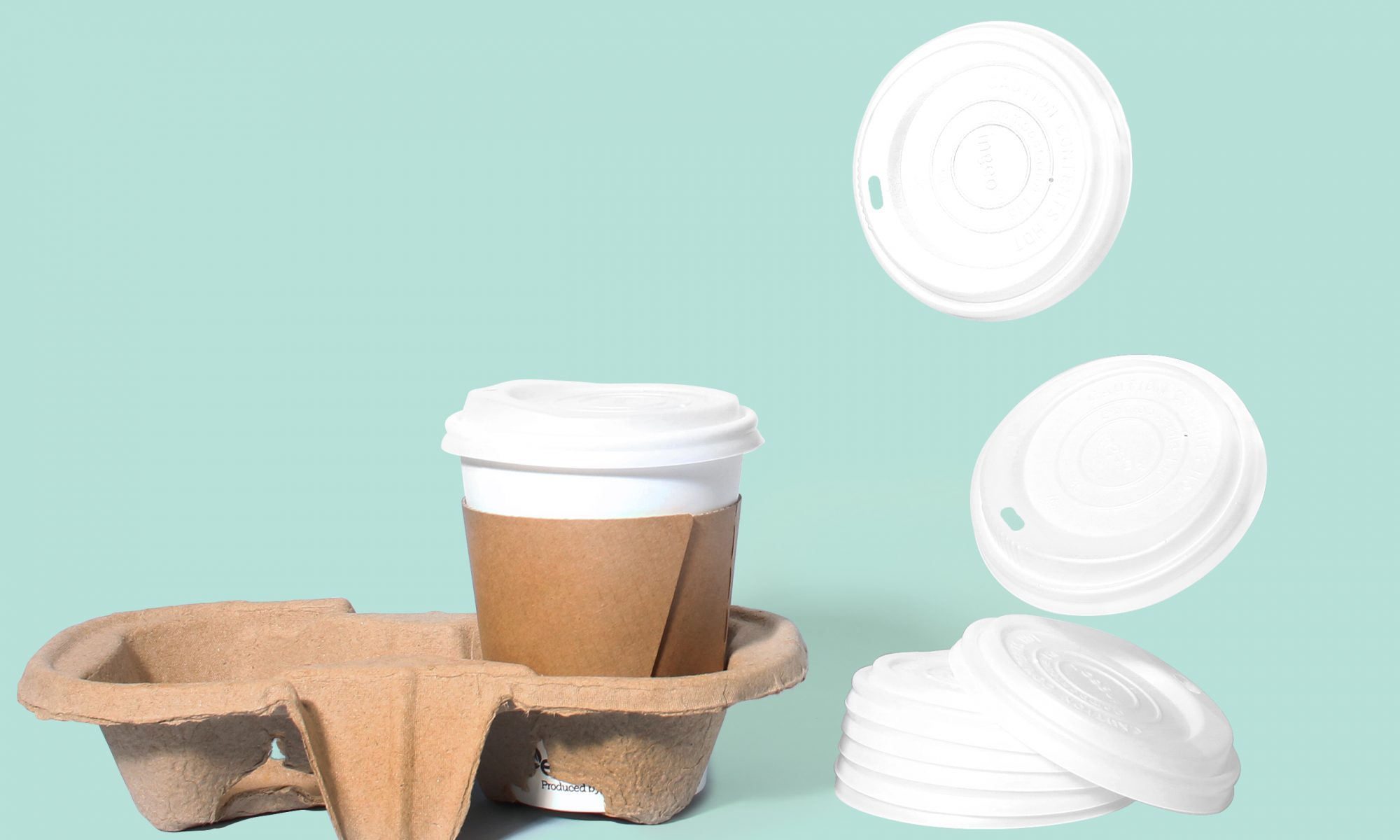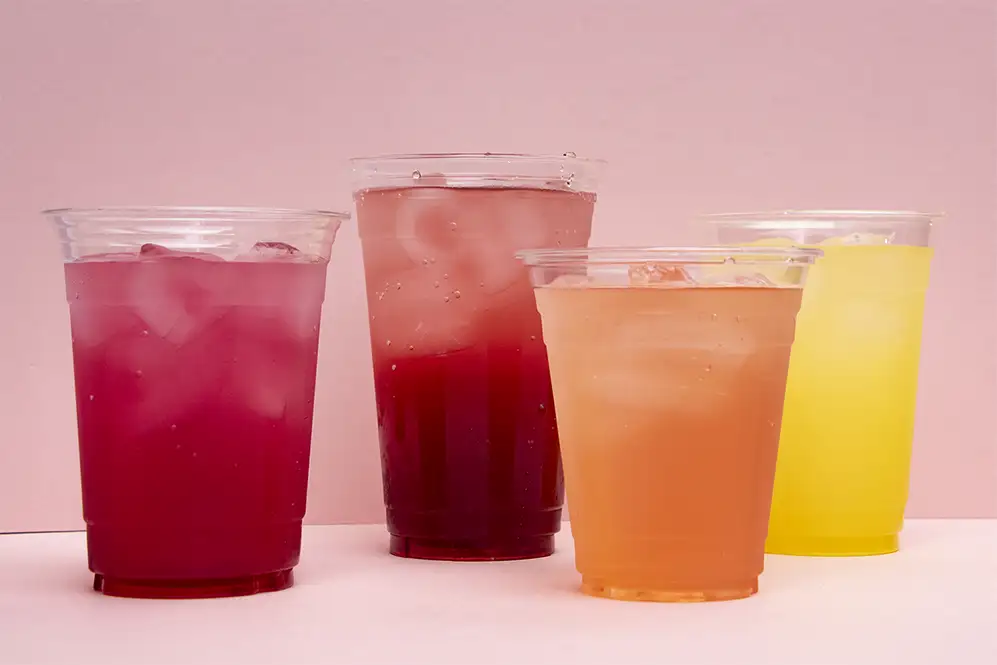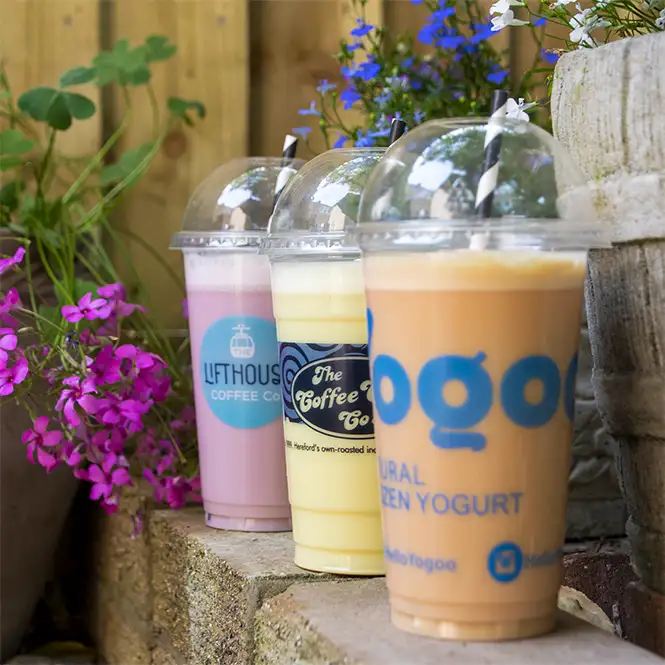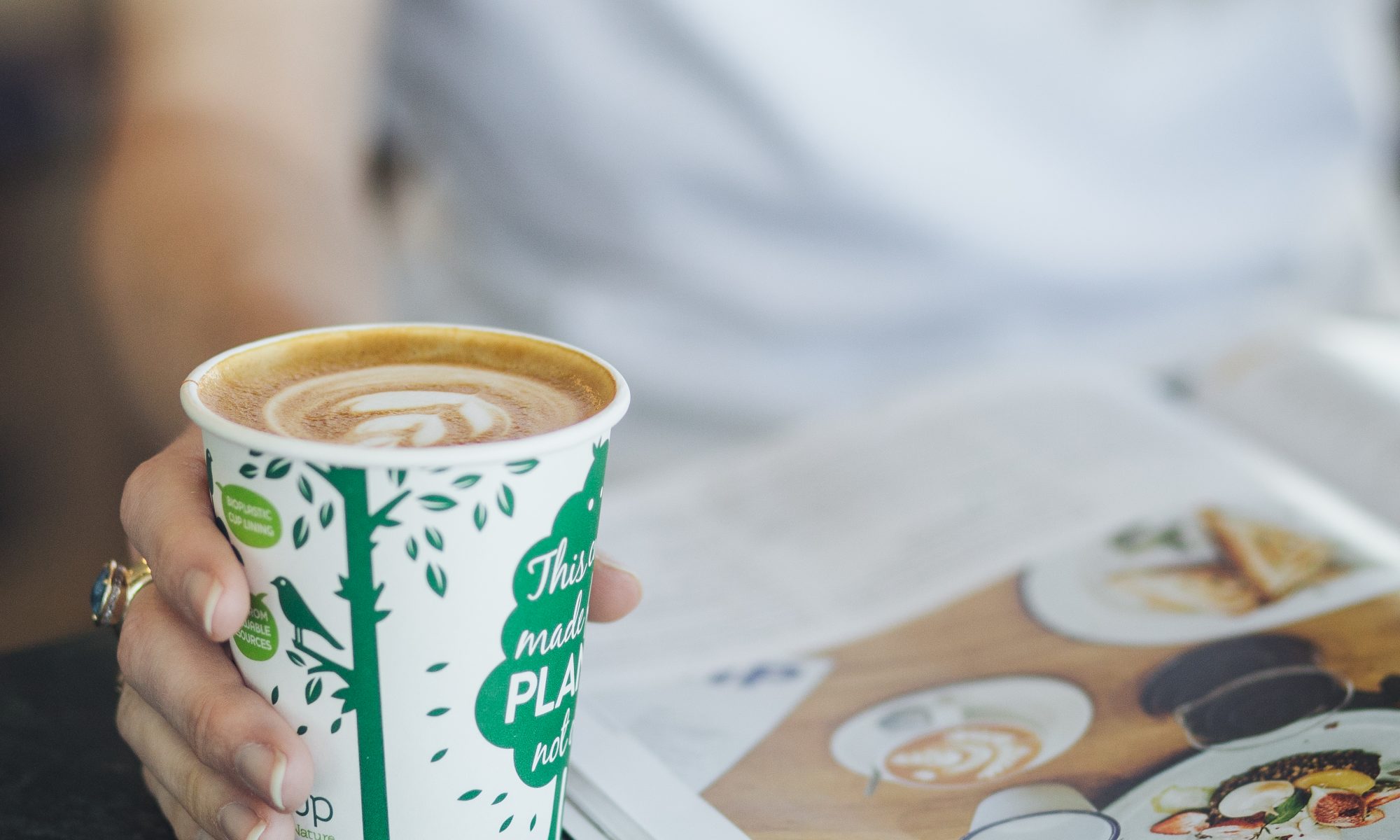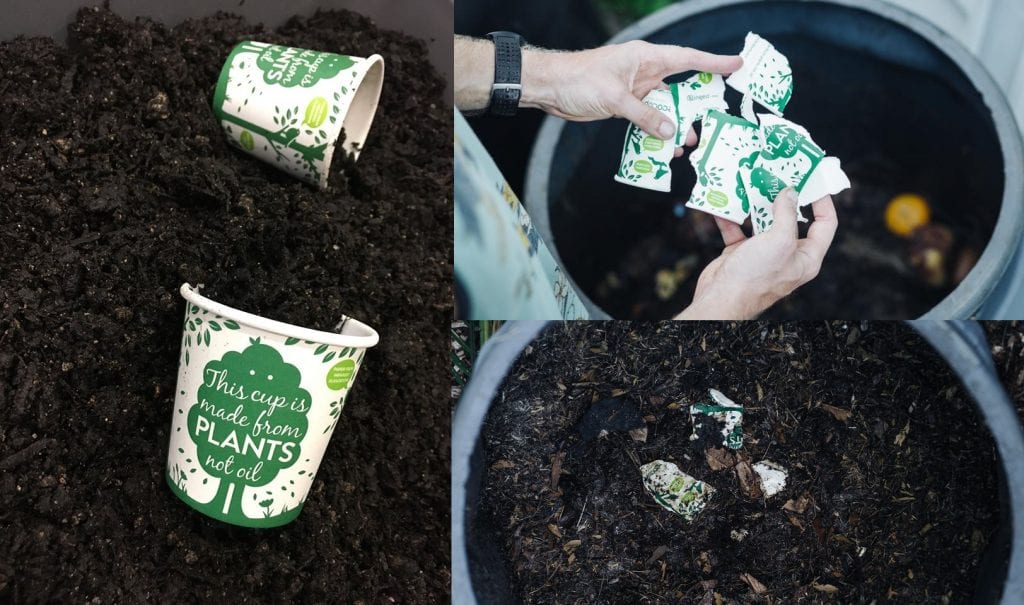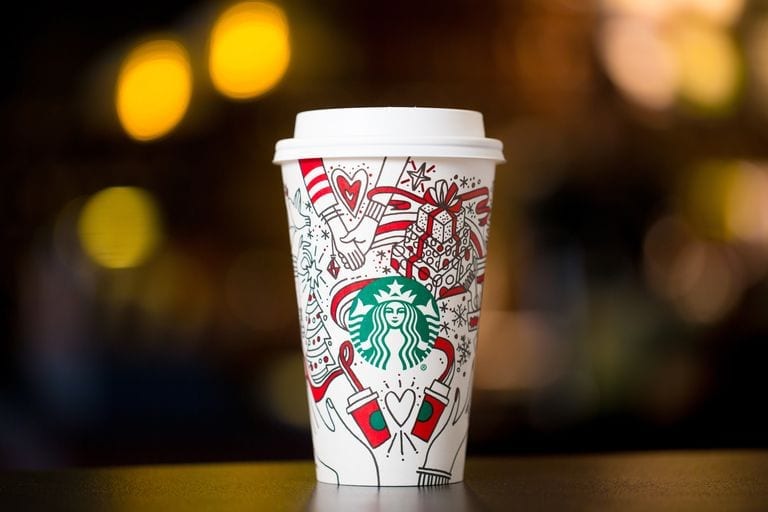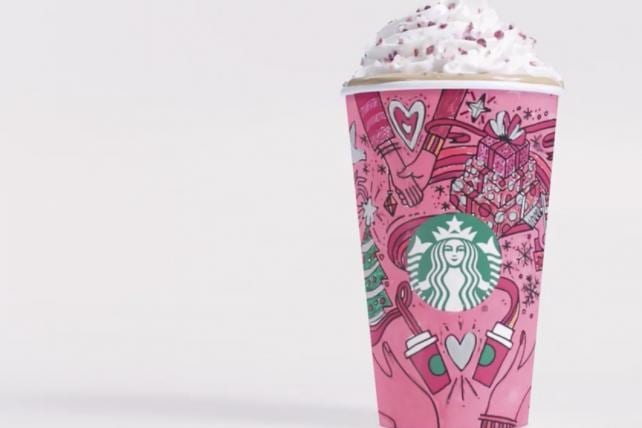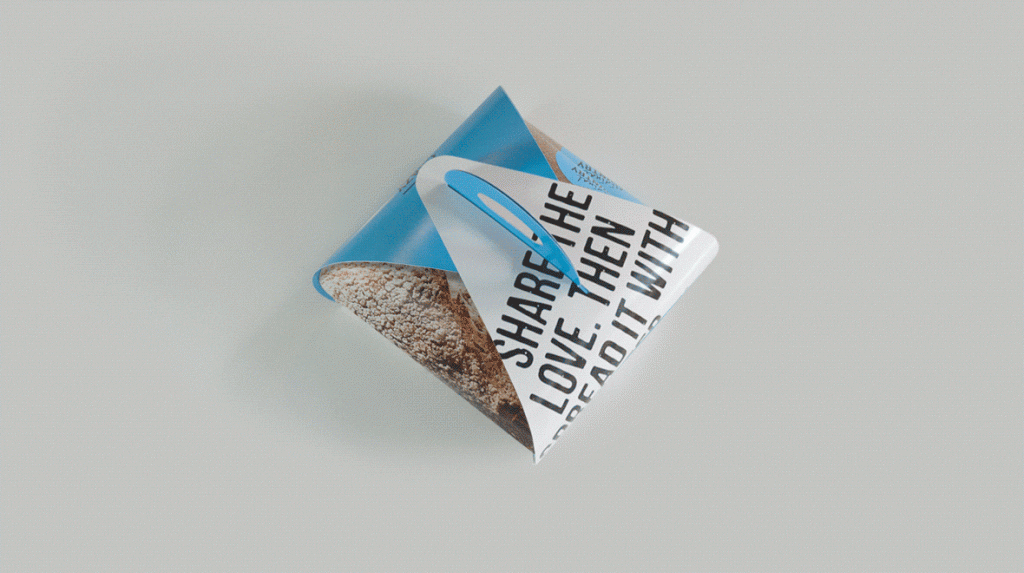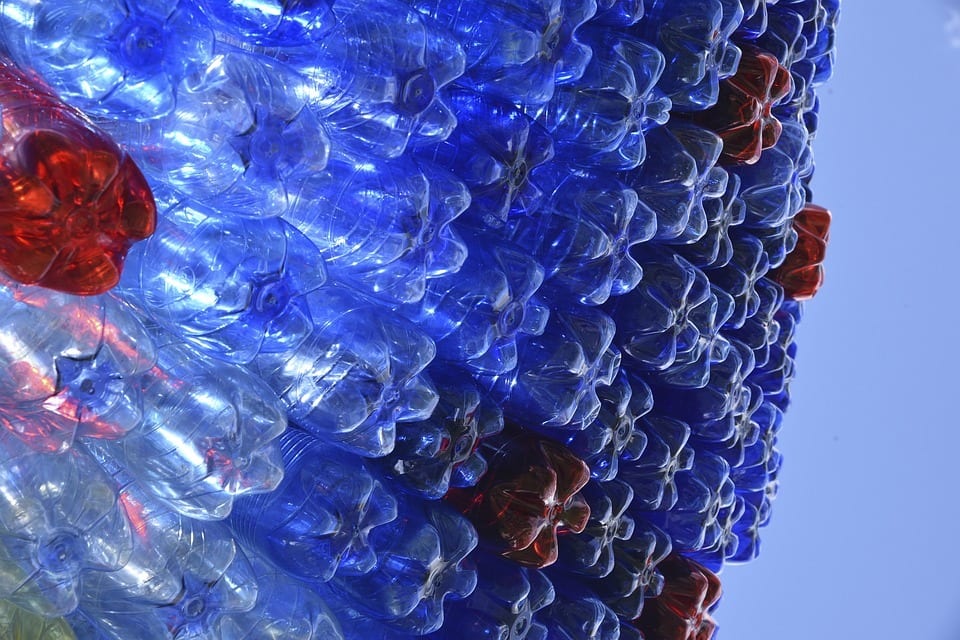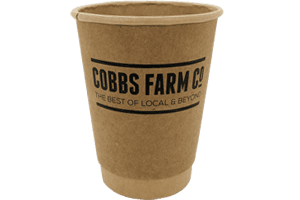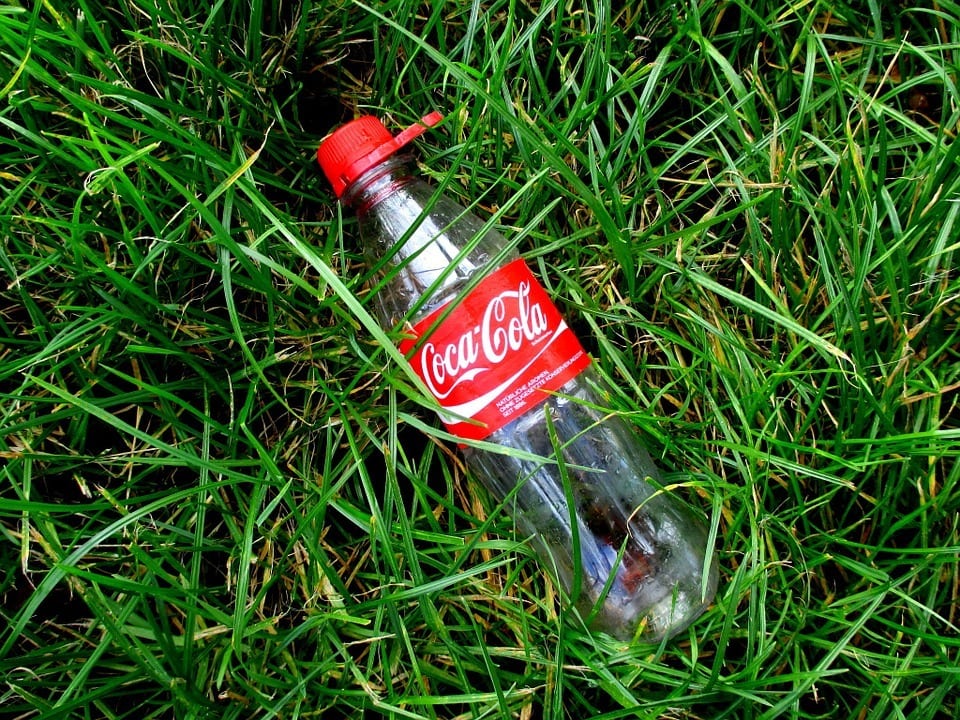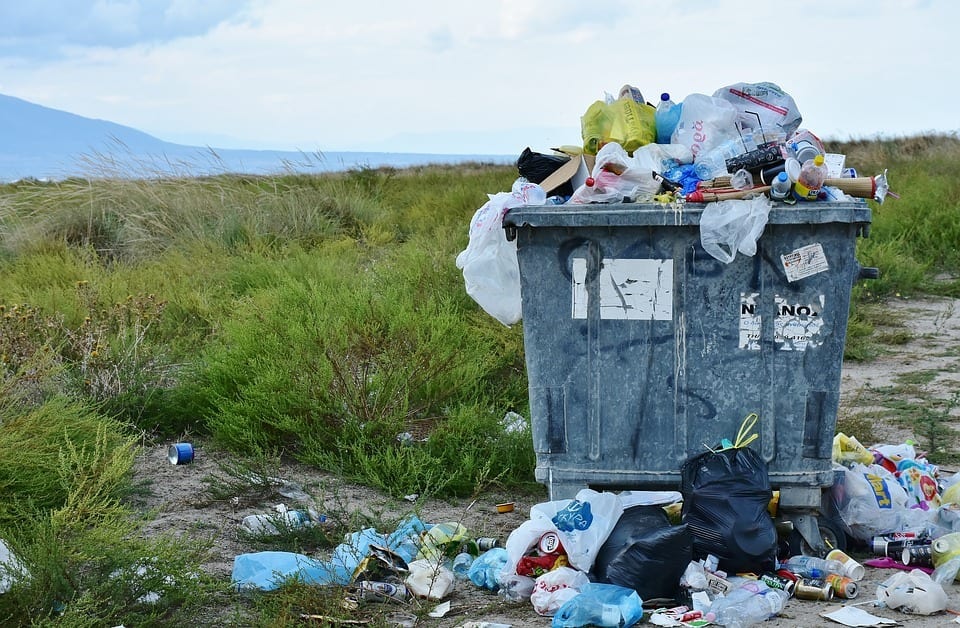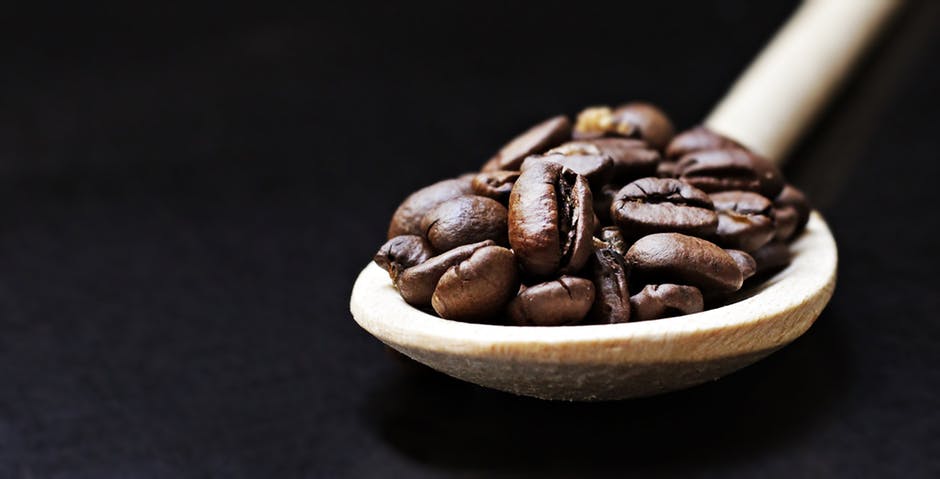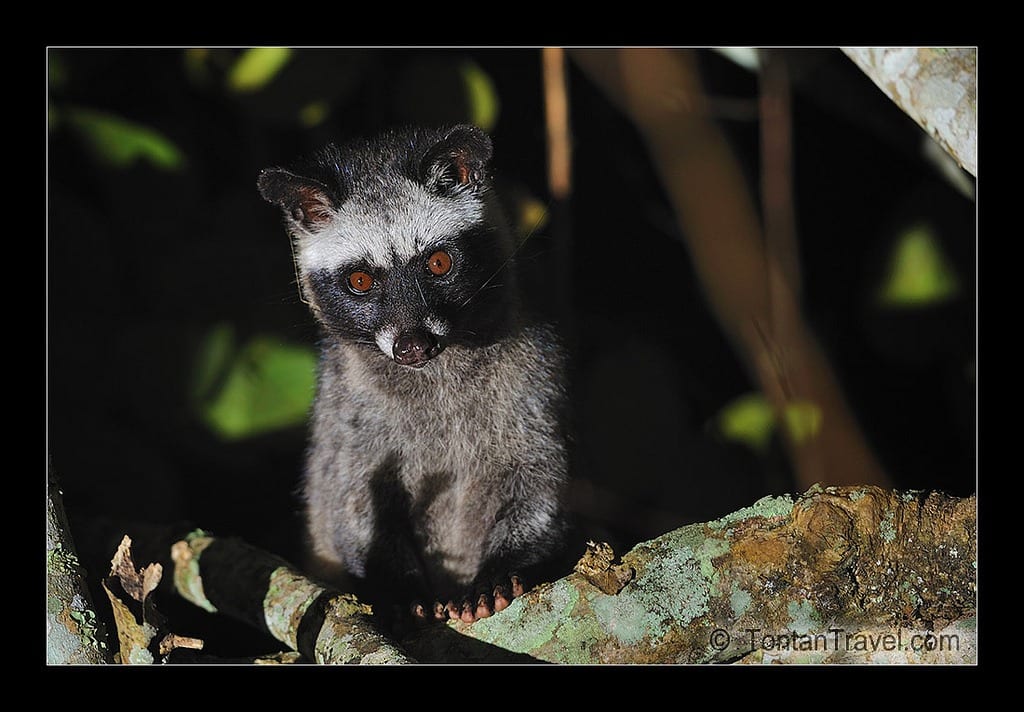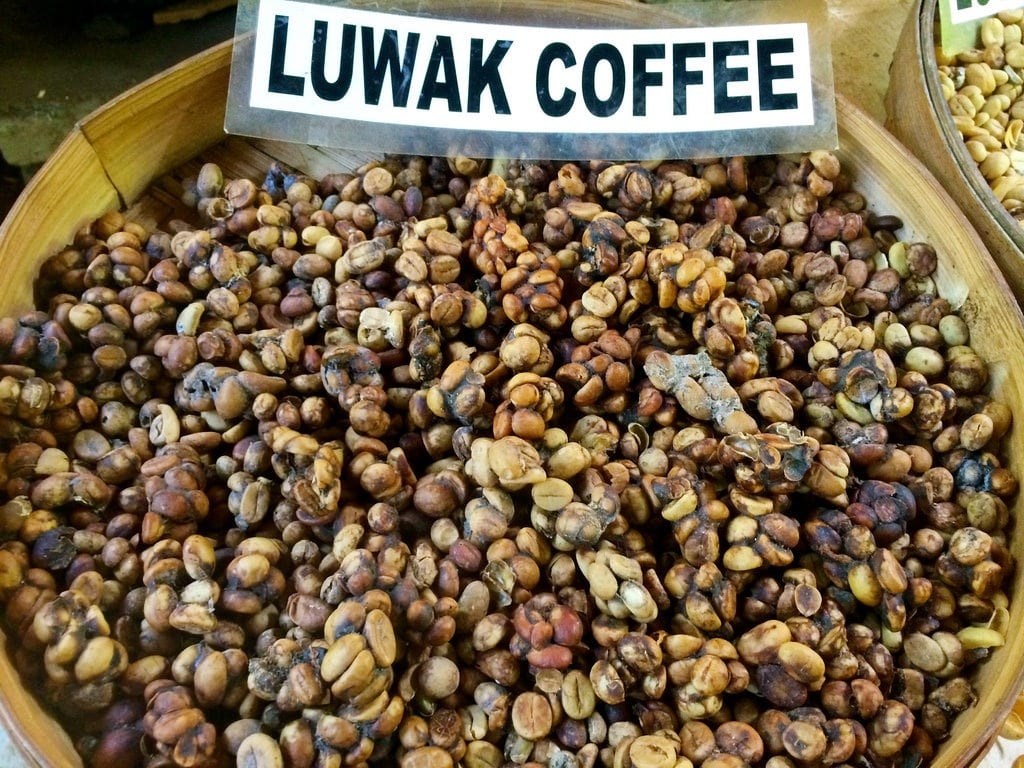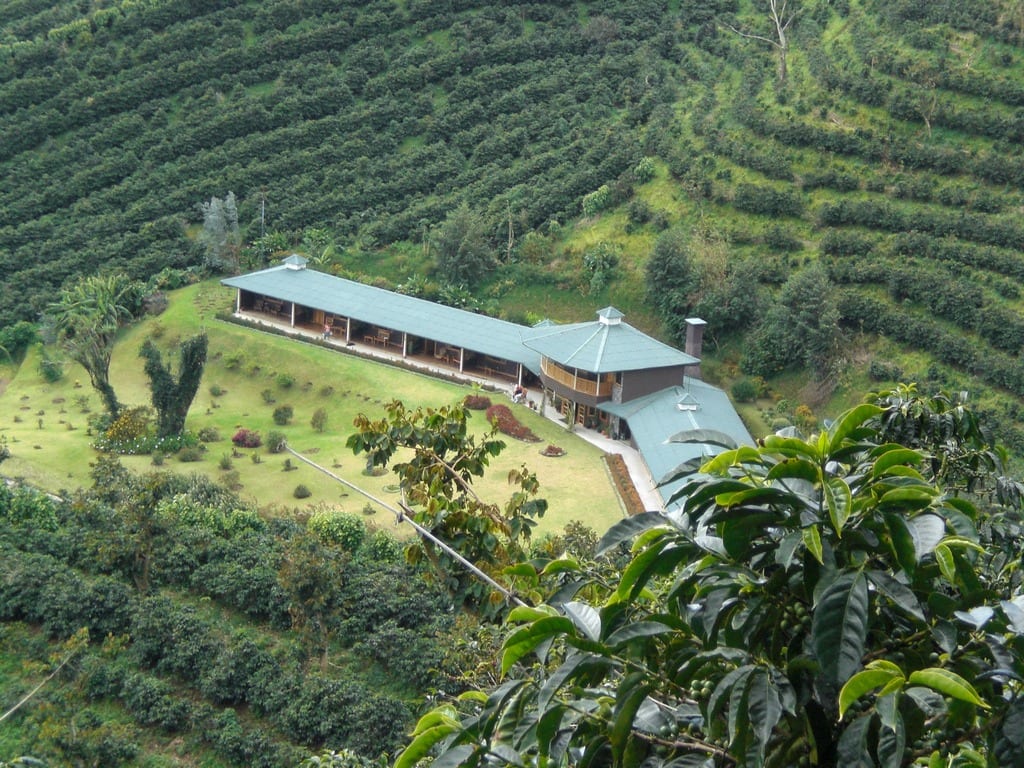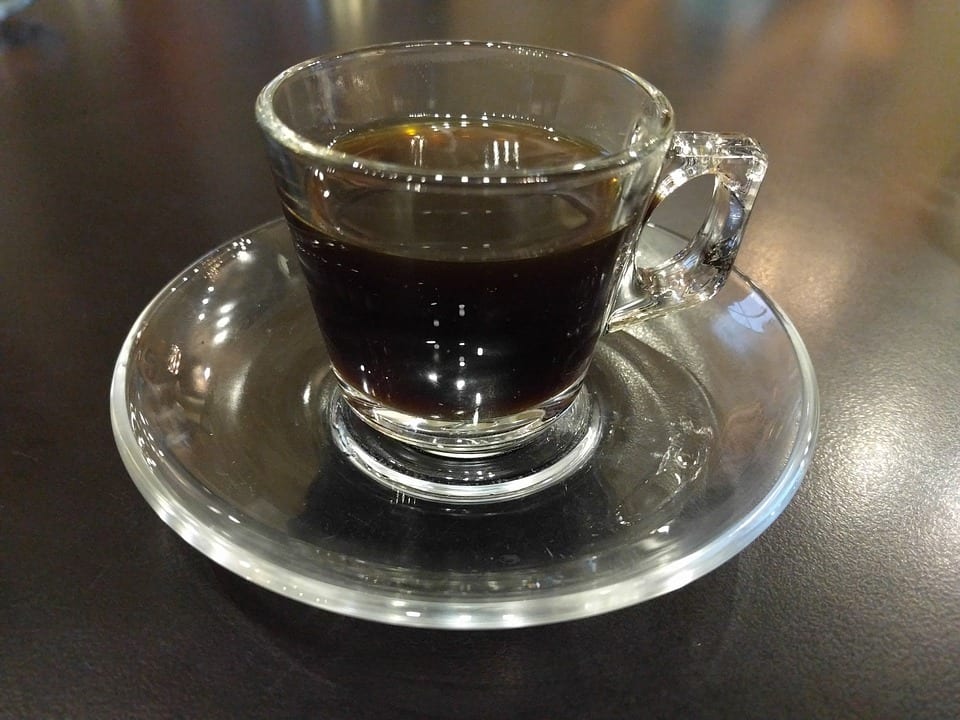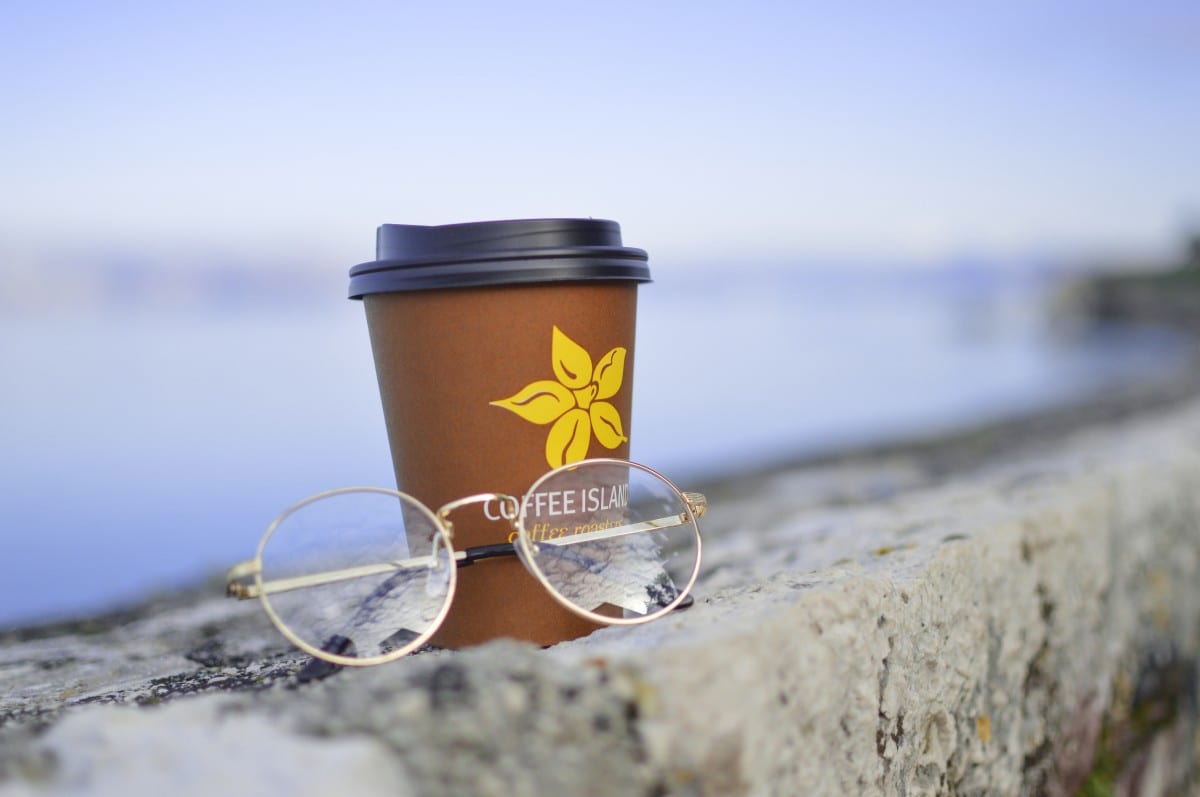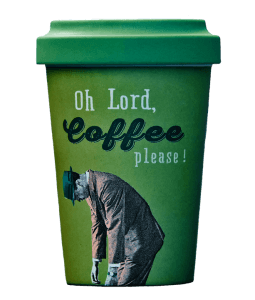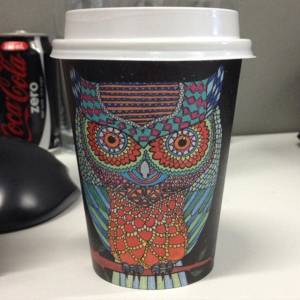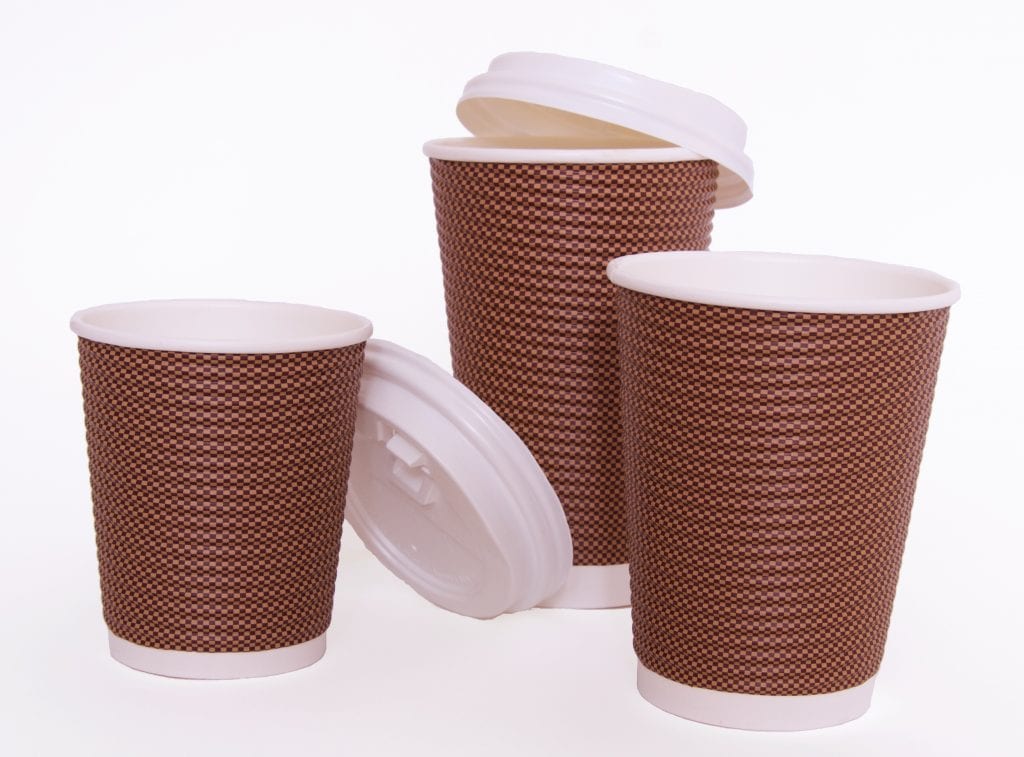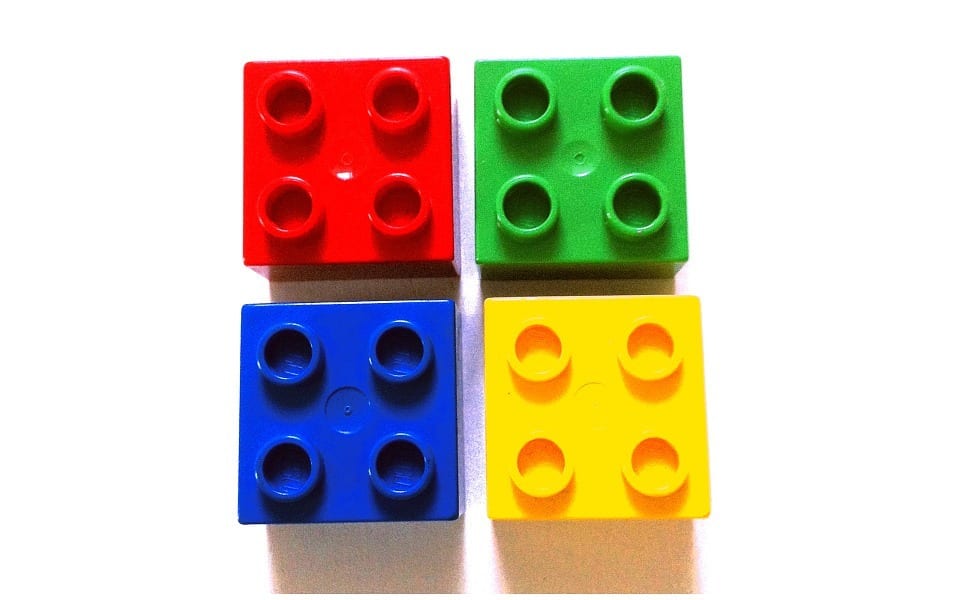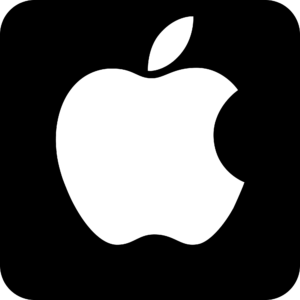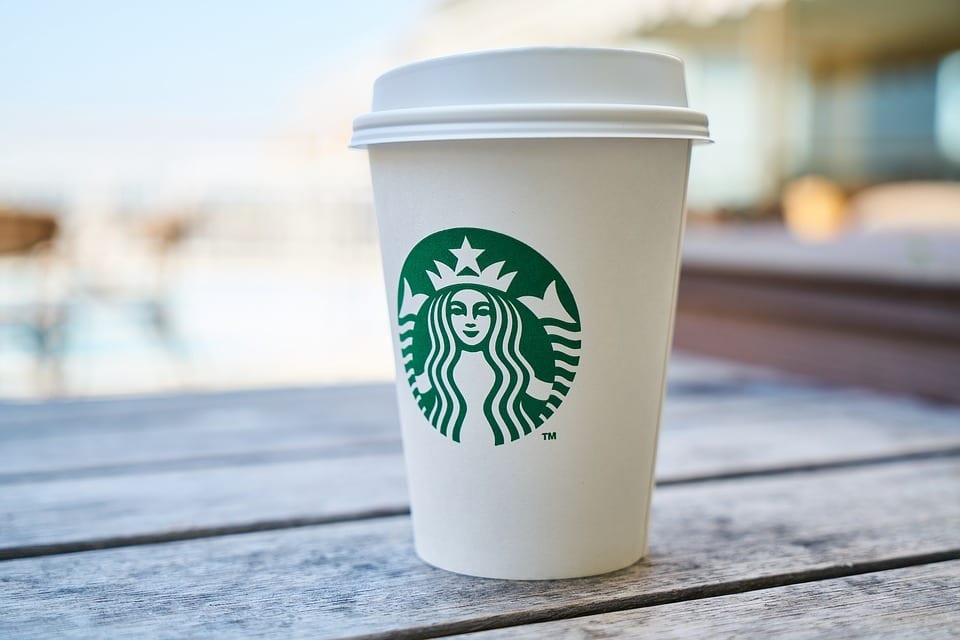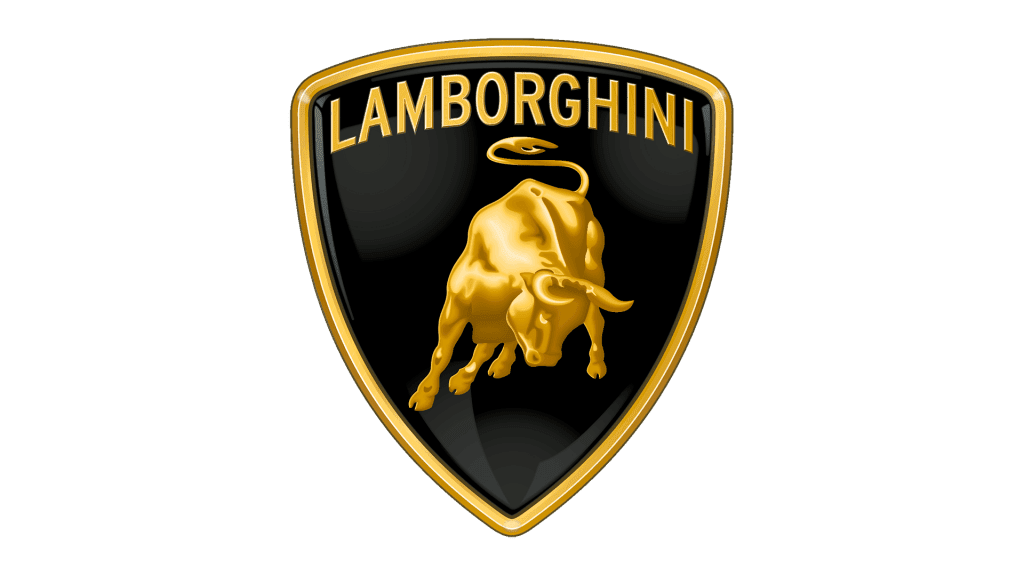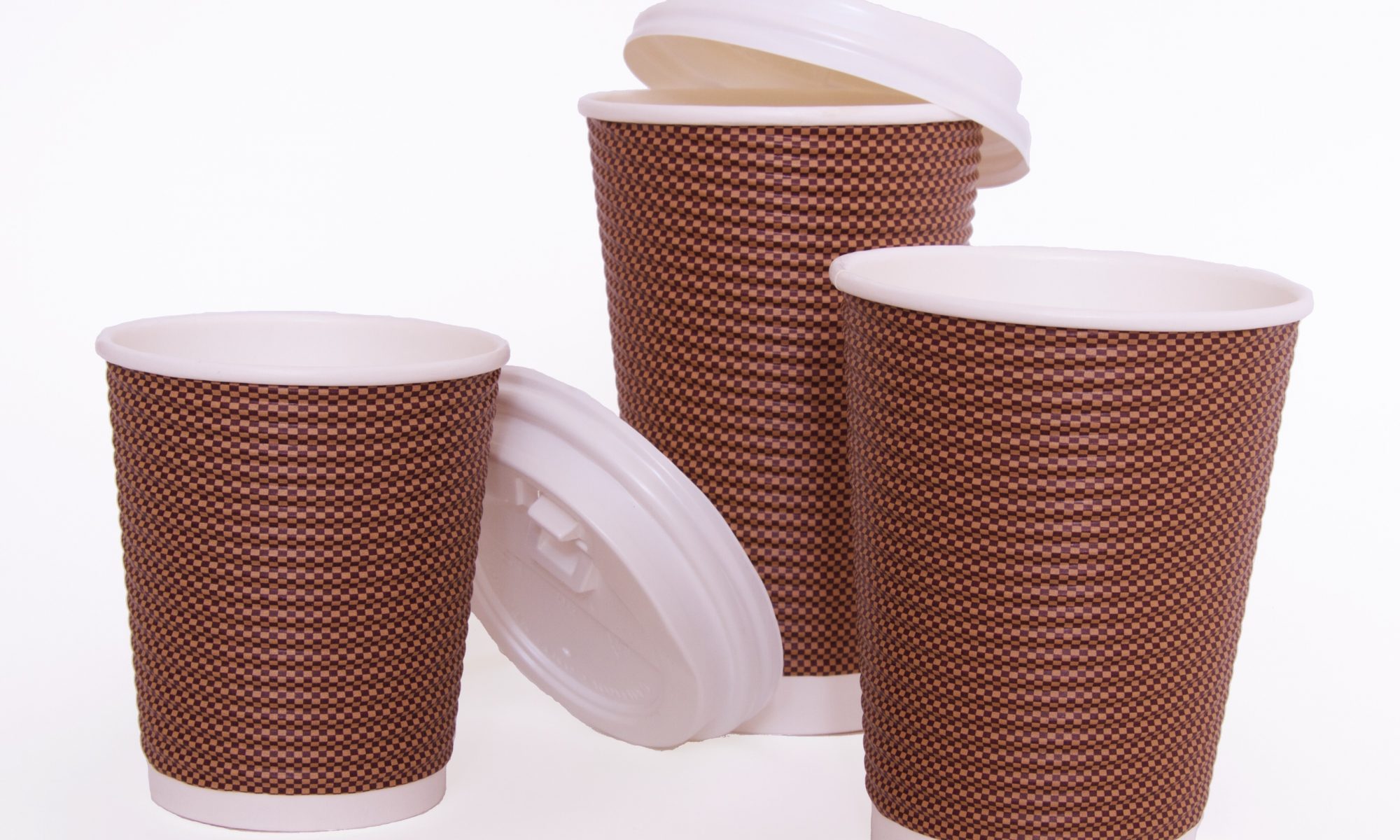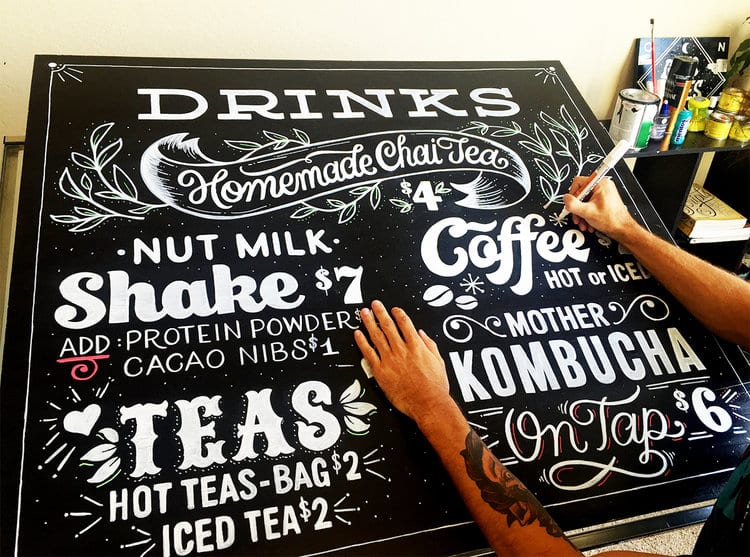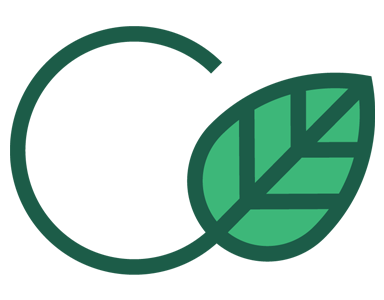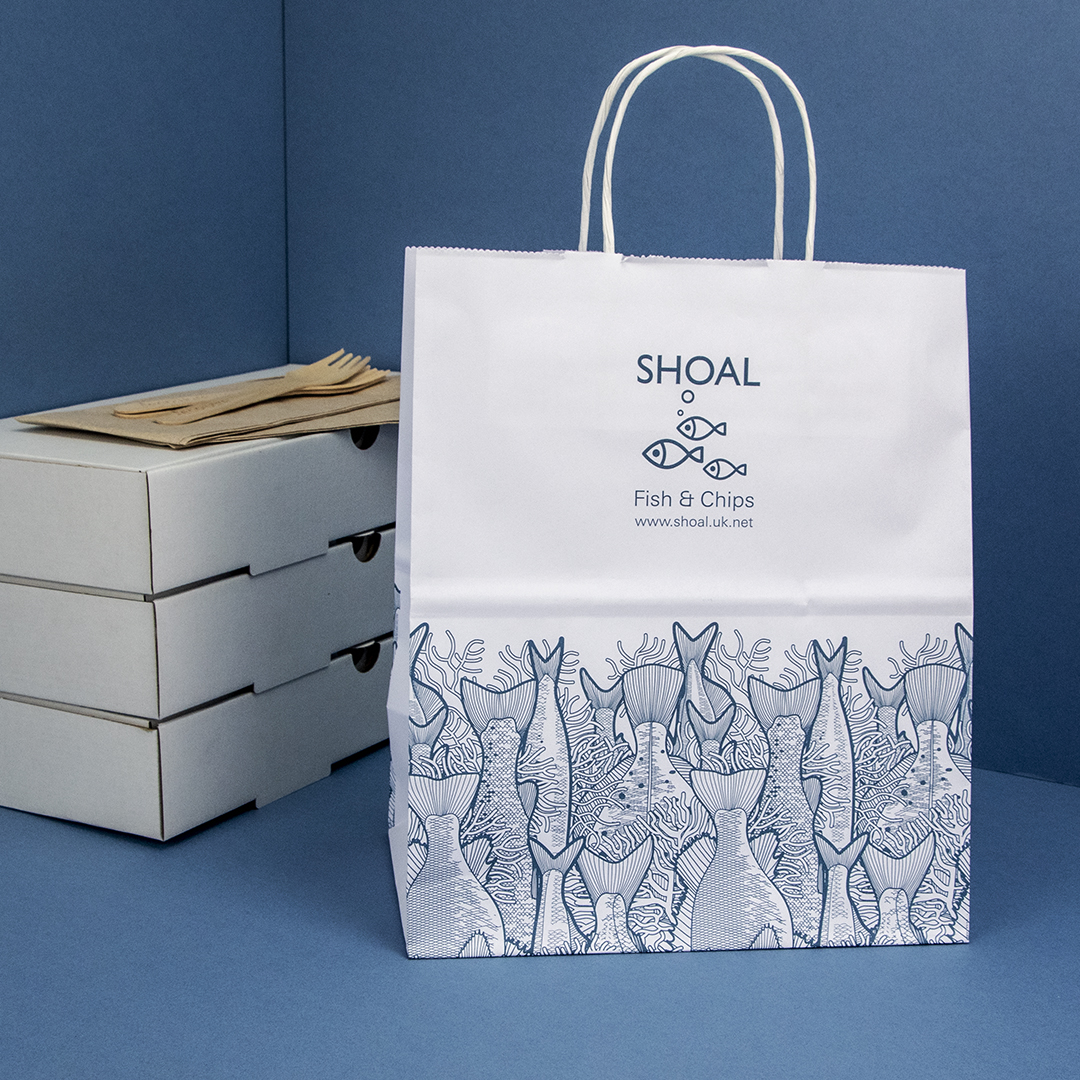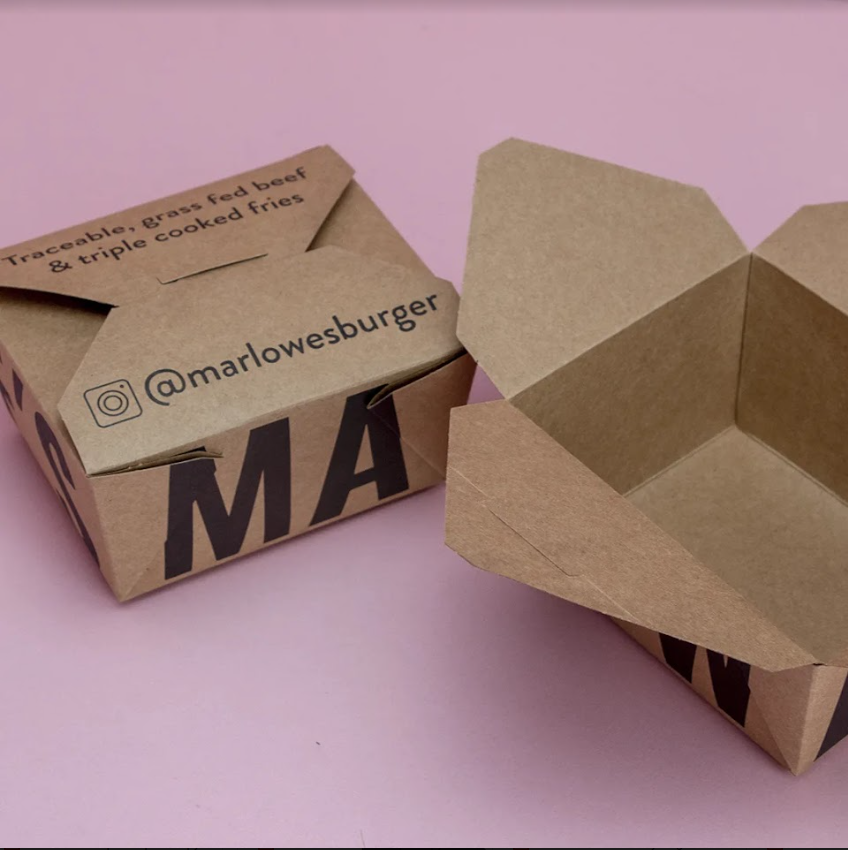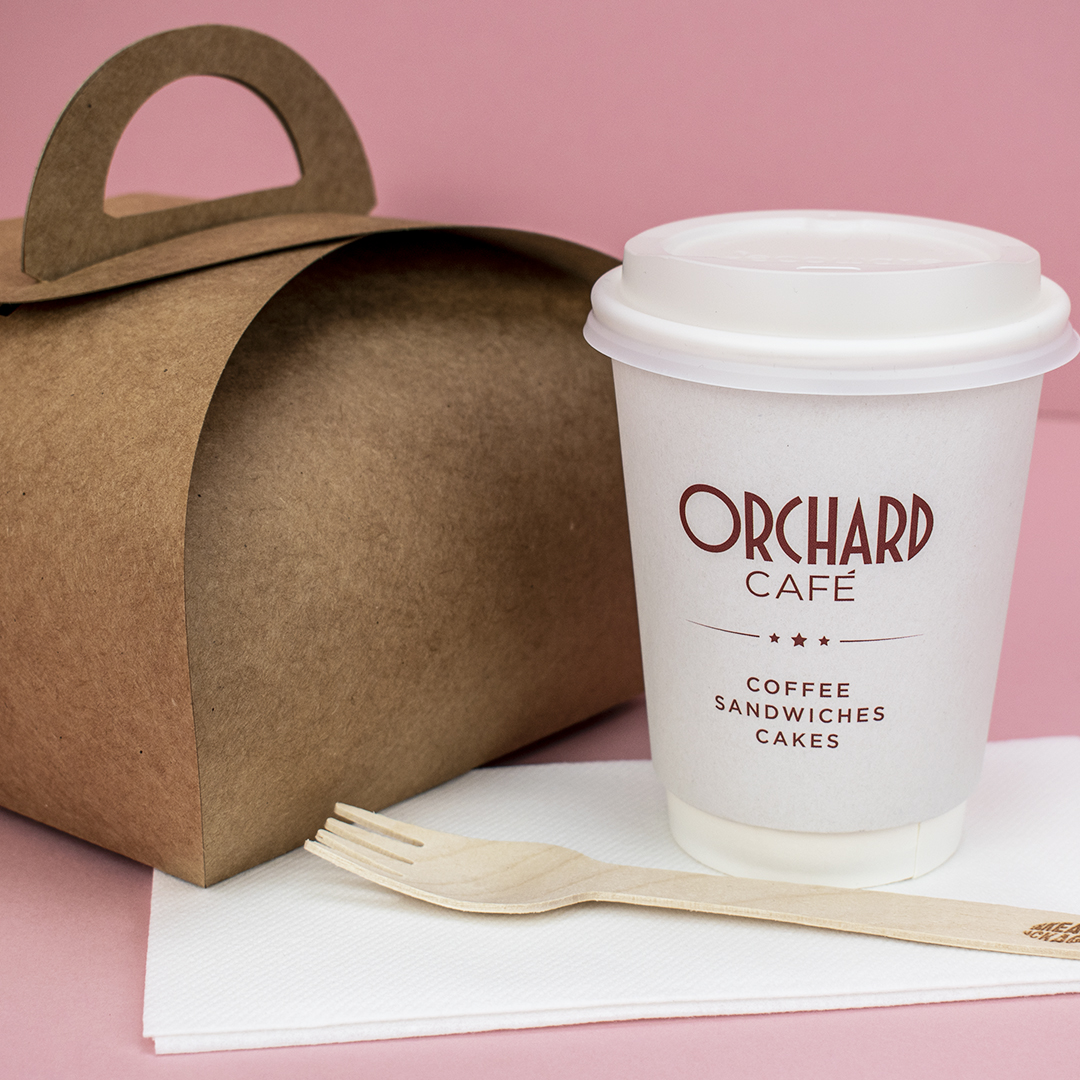
Attention, coffee shop owners! When did you last think about restocking your café’s packaging supplies? Choosing the right coffee shop packaging can be a challenge, especially if you’re just starting out.
At Takeaway Packaging, we’re experts in selecting suitable packaging for cafés and coffee shops alike. We’ll give you the full rundown of our eco-friendly takeaway coffee cups you might need along with all the extras — like lids, cutlery and napkins.
Choosing the Right Takeaway Coffee Cups and Lids
With so many different kinds of packaging for coffee and cake out there — and single-use plastics getting banned by the government — it makes a lot of sense to choose sustainable packaging. We know it can be a little confusing, particularly when packaging companies use different terms and descriptions to describe the same product!
Here’s a quick breakdown of how different hot cups work and what they are best suited for, along with a few extra tips.
Single Wall Cups |
Double Wall Cups |
Triple Wall Cups |
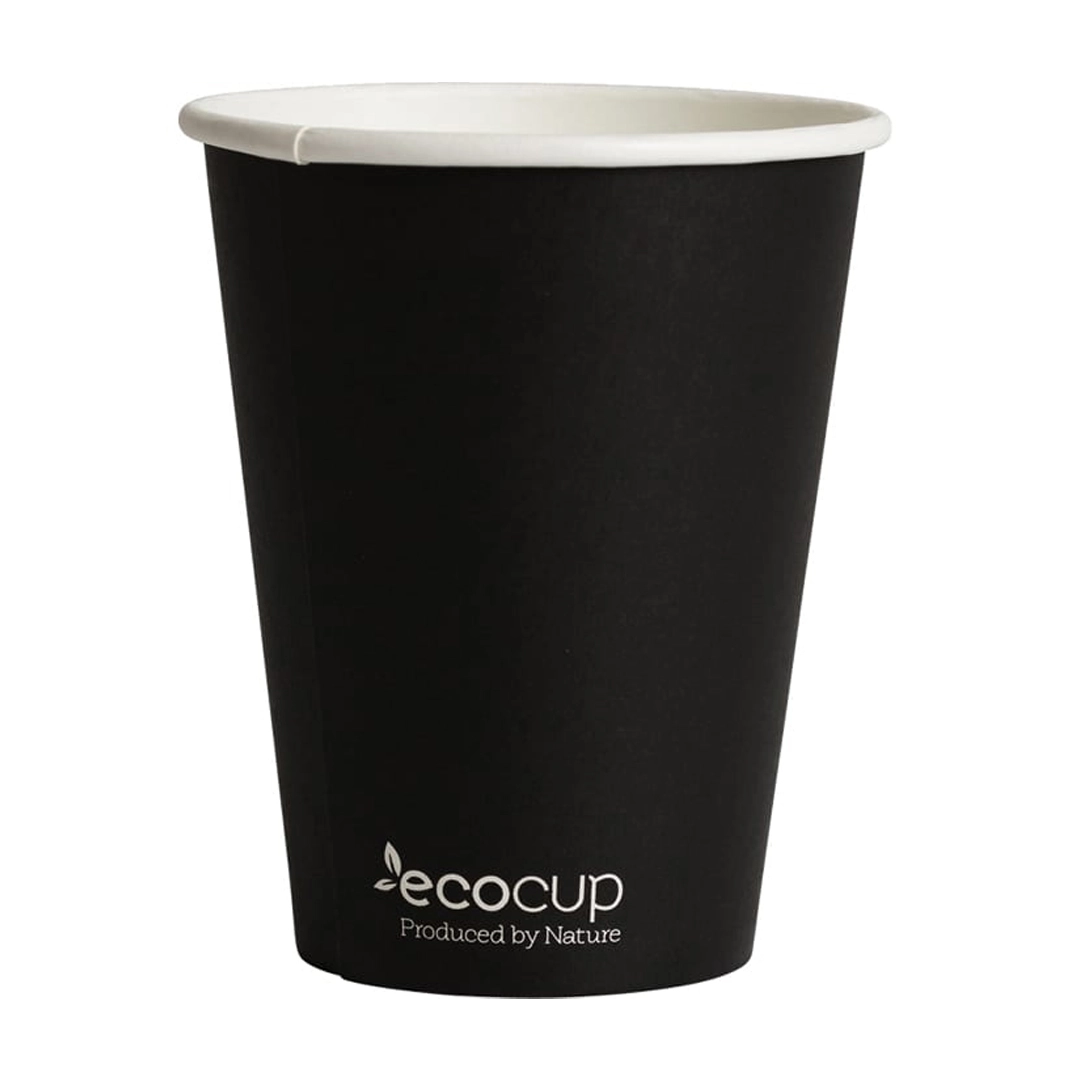 |
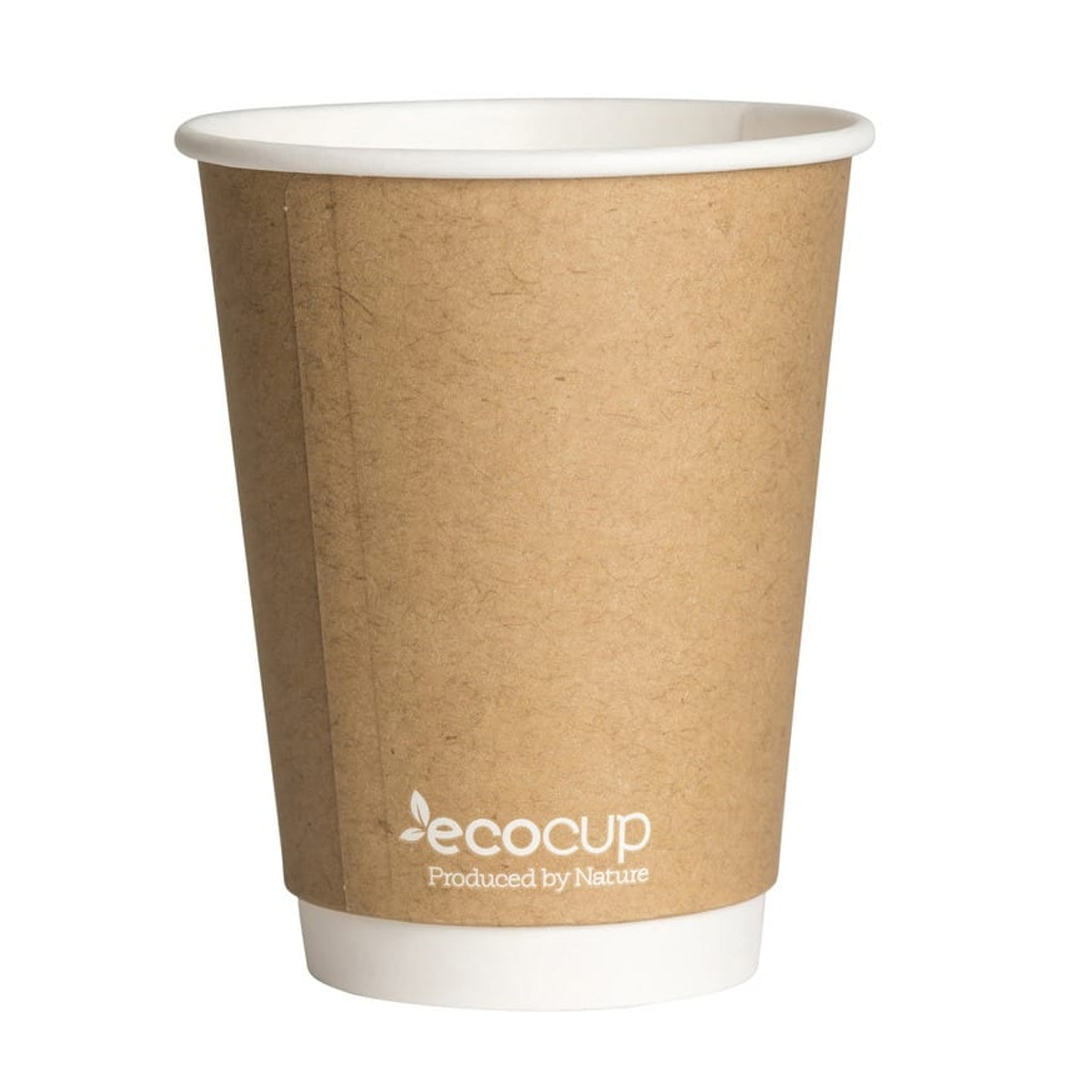 |
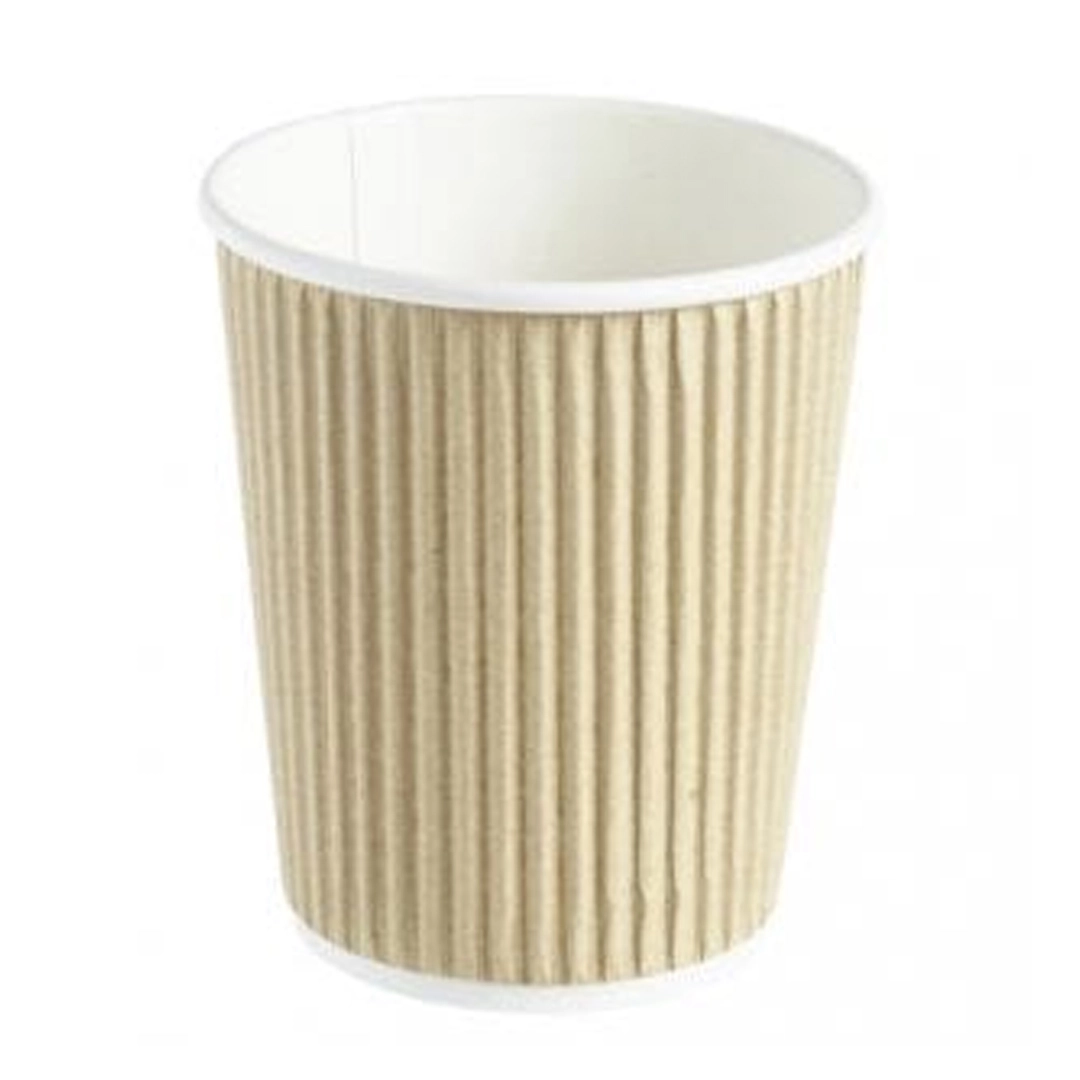 |
| Single wall cups can be used for both hot and cold beverages. These provide the least amount of insulation, which is why we recommend using eco-friendly sleeves to protect customers’ hands if you plan to use them for hot drinks. | Double wall cups are best suited to hot drinks and are a popular choice for takeaway orders. “Double wall” means the cup has an additional layer to prevent it from getting too hot, so it’s unlikely you’ll need to serve it with a sleeve. | Triple wall cups, also known as ripple cups, provide the highest level of insulation. Ripple cups work well for hot beverages but can be used with a sleeve if desired. For custom cups, our double or single wall cups are best to capture your designs. |
We stock all these types of eco-friendly compostable and recyclable coffee cups in our online store. Check it out!
Once you know what type of coffee cup you’ll need, you should think about the size. We’ve compiled a list of the best-size cup for different kinds of coffee:
- 4 oz (118 ml) — Single or double shot (e.g. Espresso, Ristretto)
- 6 oz (177 ml) — Small coffee (e.g. Lungo, Macchiato, Flat White)
- 8 oz (227 ml) — Regular coffee (e.g. Latte, Cappuccino, Americano)
- 12 oz (355 ml) — Large coffee (e.g. Latte, Cappuccino, Americano)
- 16 oz (473 ml) — Extra-large coffee (e.g. French Press, Filter Coffee)
Related: Disposable Coffee Cups: A Complete Guide for Eco-Conscious Businesses
Coffee Cup Linings
There are two types of lining you can use for your coffee cup: PE (plastic) and Ingeo™ PLA (polylactic acid).
PE: Polyethylene (PE) lining is made from plastic. Plastic offers superior water and grease resistance, is recyclable and can be recycled into other products multiple times.
Ingeo™ PLA: Also referred to as “bioplastic”, polylactic acid (PLA) is plant-based, not oil-based. It’s 100% biodegradable and compostable, making it our top choice for sustainable coffee cups.
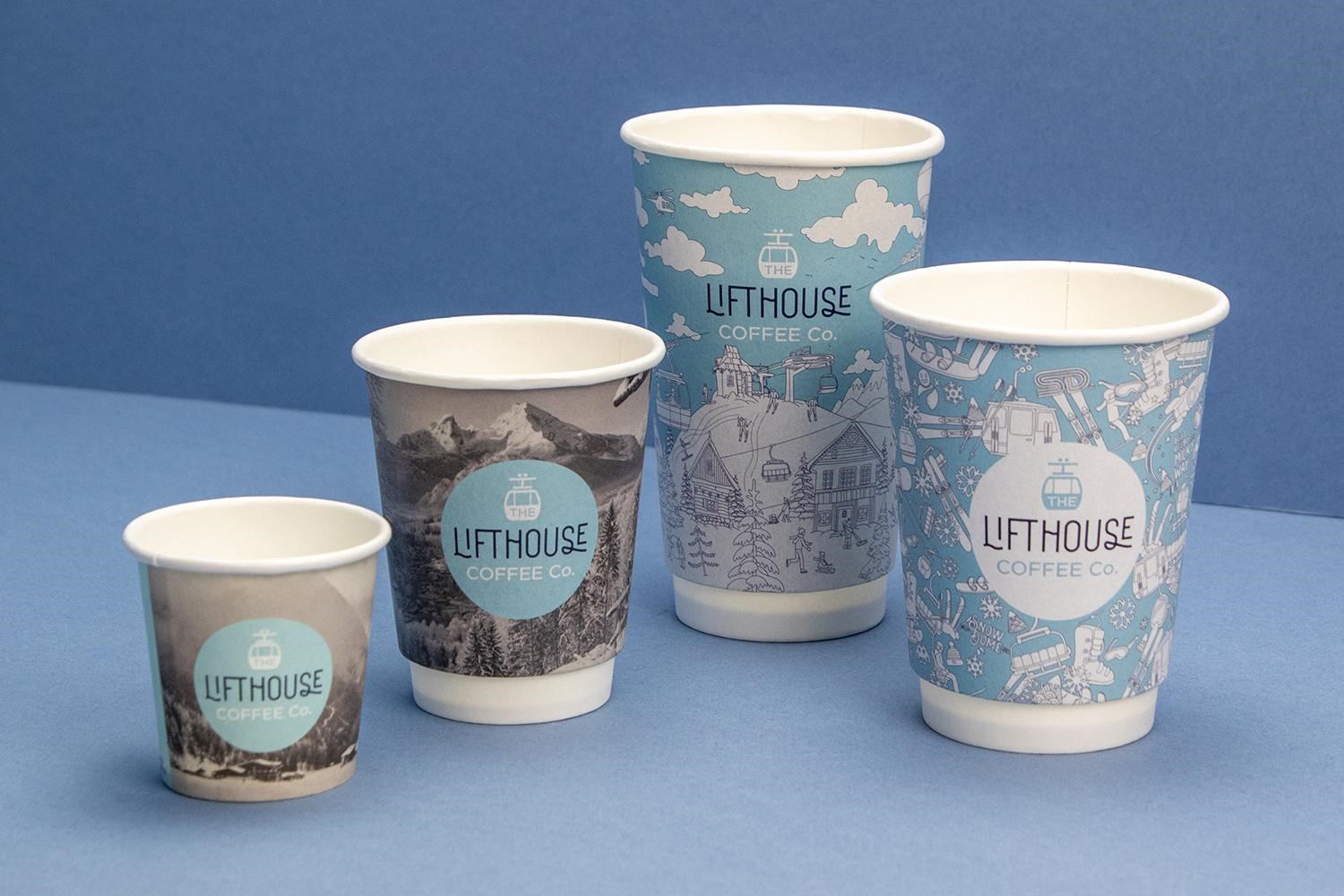
Custom Printed Coffee Cups
Why not add a custom design to show off your branding? It gives you your very own mobile advertisement. Use this opportunity to promote your social media handles or add unique artwork and logos, which can help drive sales.
Unbranded stock cups have their advantages too — they’re budget-friendly and can be delivered straight away. If you are on a budget, we can also supply branded stickers which can be added to plain stock cups — cost-effective branding!
Related: Should You Use Branded Takeaway Packaging?
Recyclable and Biodegradable Coffee Cup Lids
When ordering takeaway coffee cups, many purchase lids for each cup size. However, for most cups, one size fits all (from 10oz up). Smaller cups have a smaller diameter and will require smaller lids.
Lids aren’t the only finishing touch. Everyone likes their coffee a little differently, so make sure you’re stocked up on coffee stirrers and cup carriers to provide your customers with everything they need.
Buy eco-friendly coffee cup lids to match your takeaway coffee cups.
Clear Cups for Smoothies and Juices
Nowadays, coffee shops sell more than just coffee. Smoothies, frappes and juices are part of the gang too. If you’re serving cold drinks, you might prefer a clear cup to display your colourful concoctions. Clear cups are very straightforward — simply choose your size (7 oz–20 oz) and material. Clear cups are only suitable for use with cold drinks.
PLA clear cups are the perfect choice for environmentally conscious businesses. Eco-cups are fully biodegradable and compostable, and you can brand them too. They also make for easy disposal, leaving your customers feeling guilt-free.
We also offer recyclable clear cups, which are ideal for cold drinks like smoothies, fresh juices, iced coffees and milkshakes. They’re made from 100% recycled material, which can be recycled again and again after use.
When shopping for our clear cups, you can choose from two kinds of lids. A domed lid is best for thicker drinks with toppings like whipped cream (think frappes). Flat lids are a better choice for iced coffee and juices.
Biodegradable Straws
In July 2021, the government banned single-use plastic straws and stirrers. Considering the negative impact plastic straws have on our marine environments, we’re all the more glad for it. For thick drinks, we recommend choosing a straw with a larger diameter, such as 12 mm. Here is a selection of straws for all your juice, smoothie and cold beverage needs:
Paper Straws |
PLA Straws |
Avocado Seed Straws |
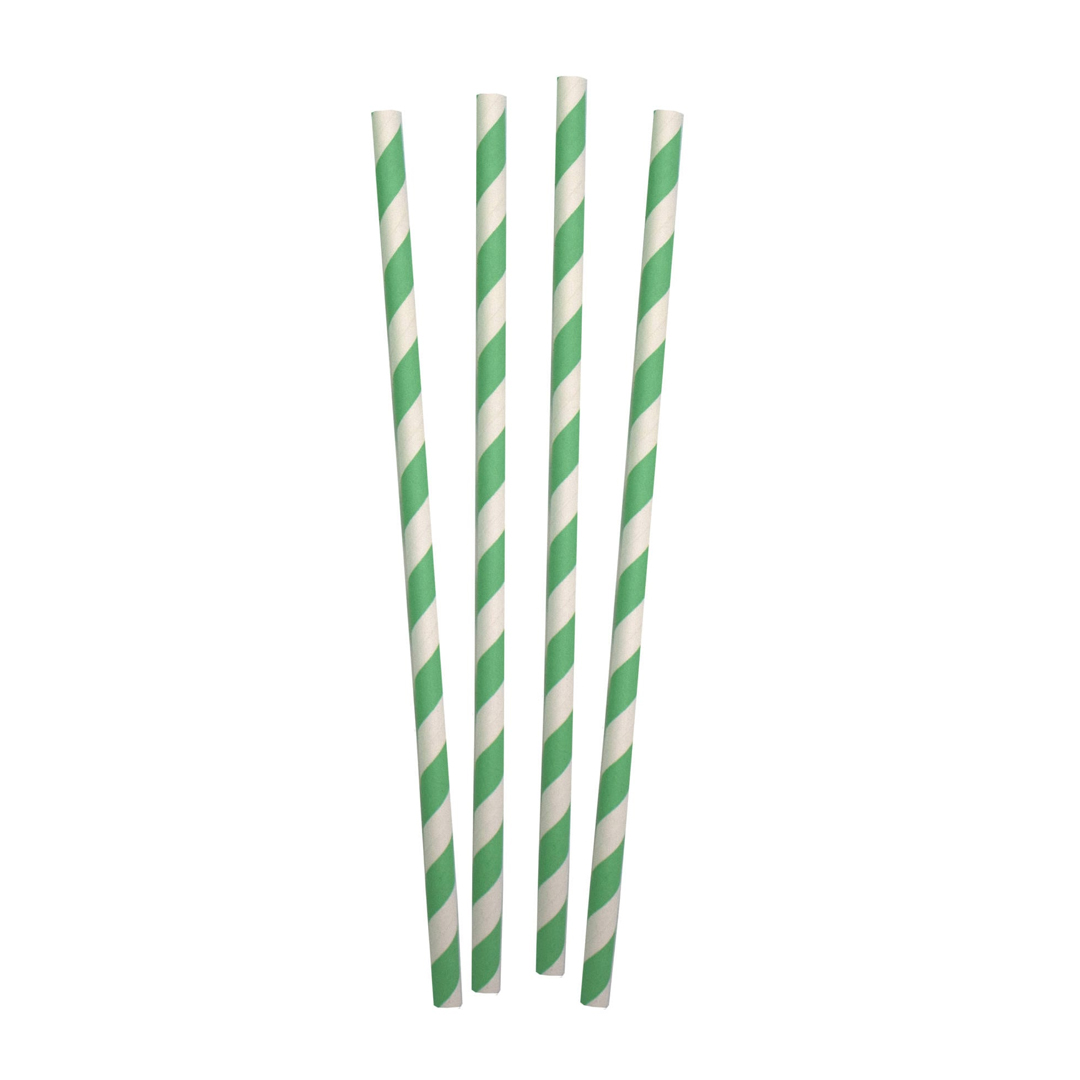 |
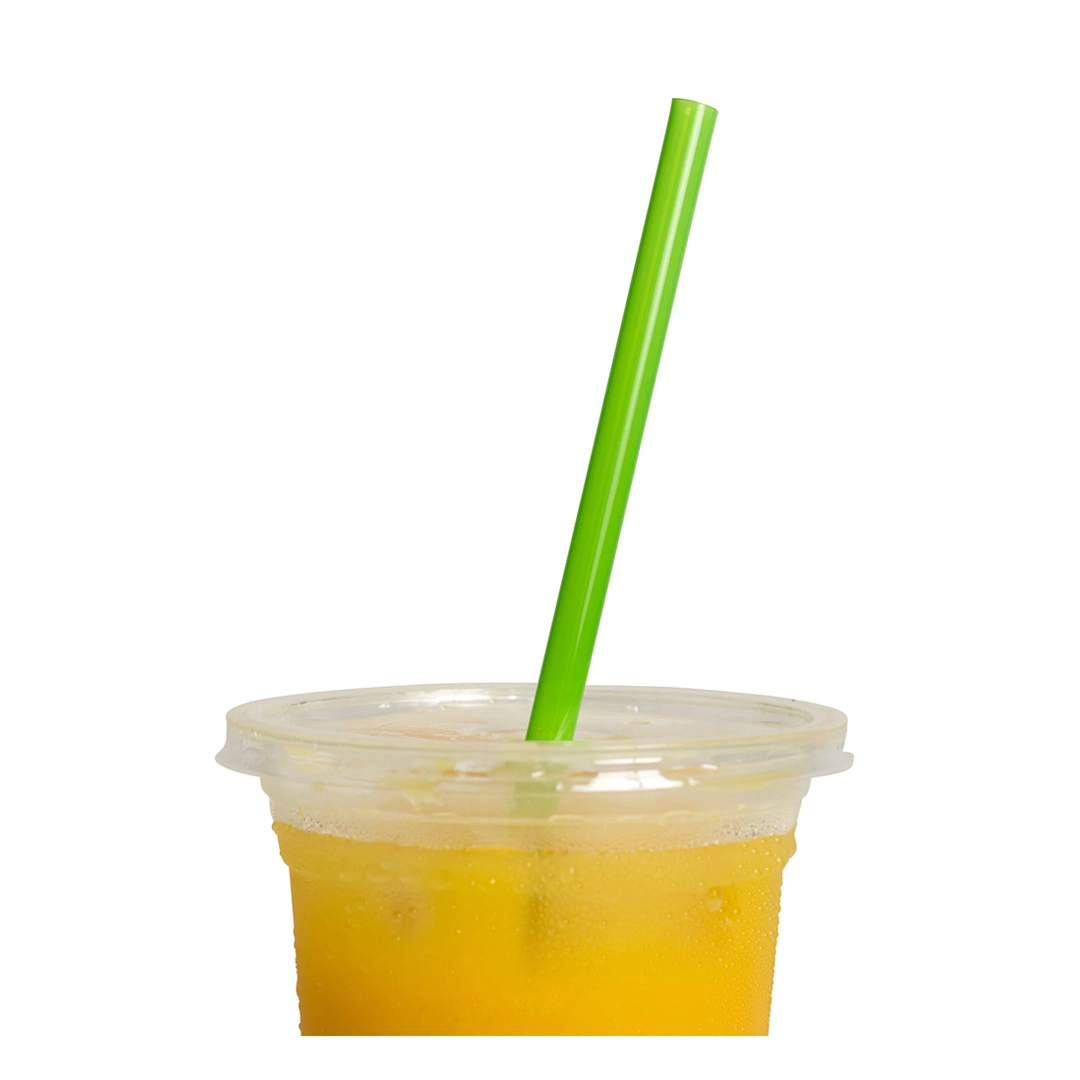 |
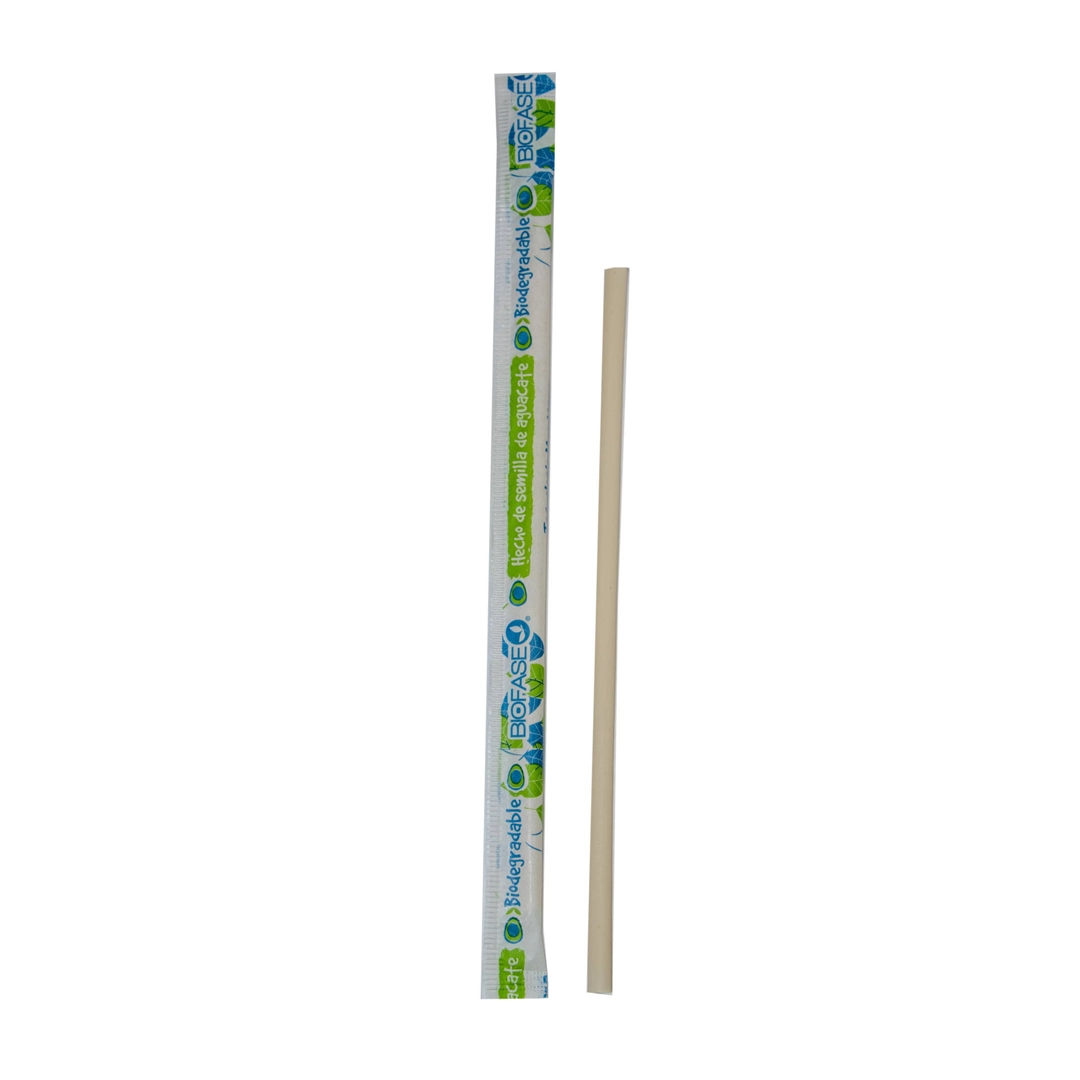 |
| Paper straws are the ultimate environmentally friendly alternative and are fully compostable. They’re suitable for thinner drinks like juices. | PLA straws have the same physical attributes as plastic but are made from a plant-based material (PLA), so they’re fully biodegradable and compostable. | These biodegradable avocado seed straws are extra strong and durable. They’re made from a biomass content of 70% from renewable and sustainable resources. |
Slurp up sustainability and view our entire range of biodegradable straws
Coffee Shop Packaging: The Accessories
So we’ve covered eco-friendly cups, straws and lids and explained what you need to know for serving hot and cold beverages, but what about the extras? Let’s look at some sustainable alternatives to single-use coffee shop accessories.
Recycled Paper Napkins
Napkins are an essential item on your café packaging supplies list. If you sell pastries, biscuits or desserts, customers will want napkins to stay clean — and green!
The ply of a napkin is how many layers the napkin has. Most napkins are one to three-ply — the higher the number, the thicker it is.
The most popular napkin material used in coffee shops is paper, as it’s easily disposable. Environmentally conscious businesses often use unbleached napkins made from recycled paper.
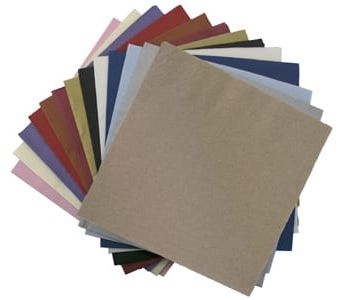 But just because your business is sustainable doesn’t mean it has to be a plain Jane. We stock a wide range of 100% biodegradable, recyclable and compostable napkins in stunning vivid colours like indigo and bright red.
But just because your business is sustainable doesn’t mean it has to be a plain Jane. We stock a wide range of 100% biodegradable, recyclable and compostable napkins in stunning vivid colours like indigo and bright red.
Related: The Best Packaging for Desserts: A Definitive Guide
Biodegradable and Compostable Cutlery
Single-use plastic cutlery is one of the biggest offenders when it comes to littering. It’s also part of the single-use plastic ban the government is introducing. Luckily, you have several viable, eco-friendly alternatives.
Bioplastic Cutlery |
Wooden Cutlery |
Avocado Seed Cutlery |
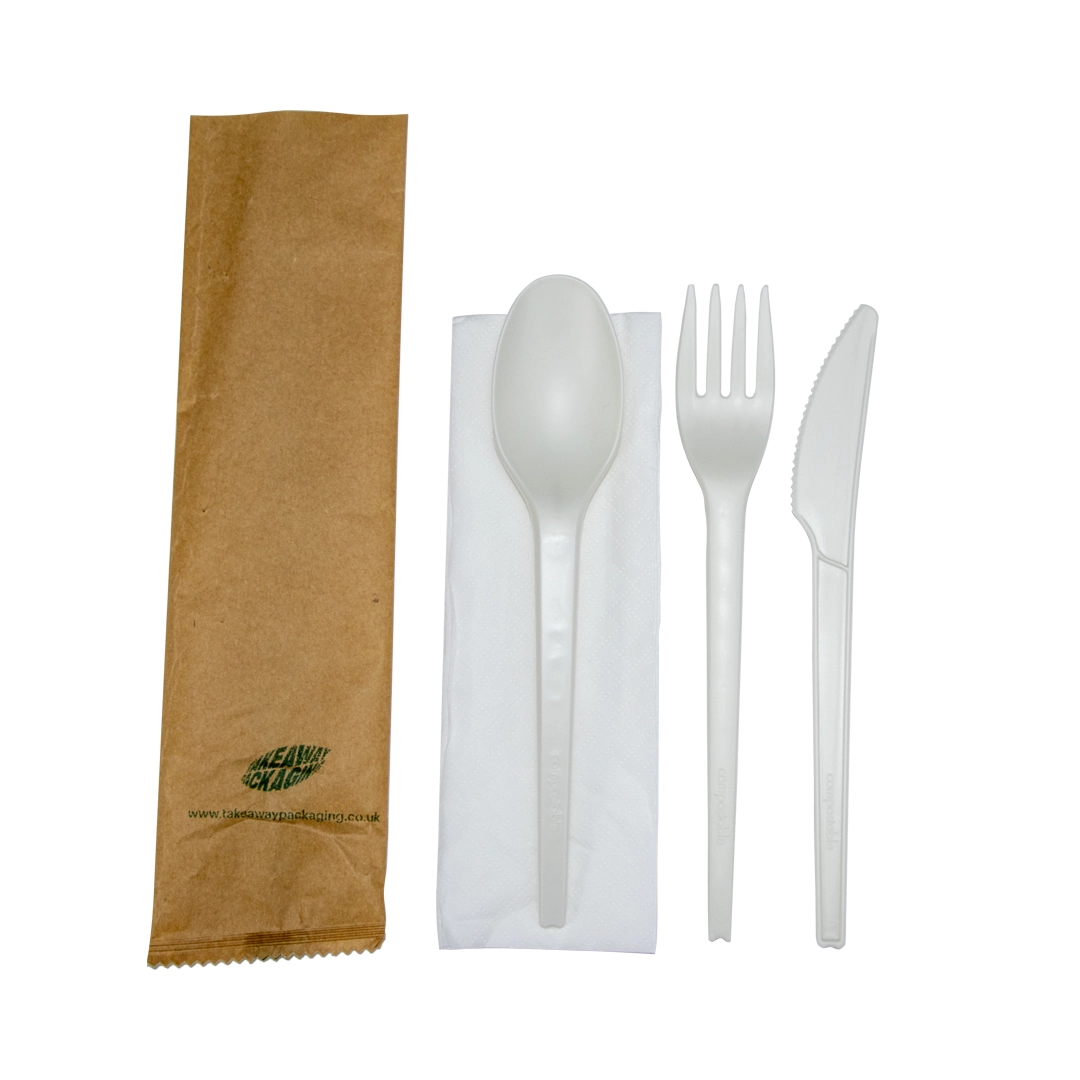 |
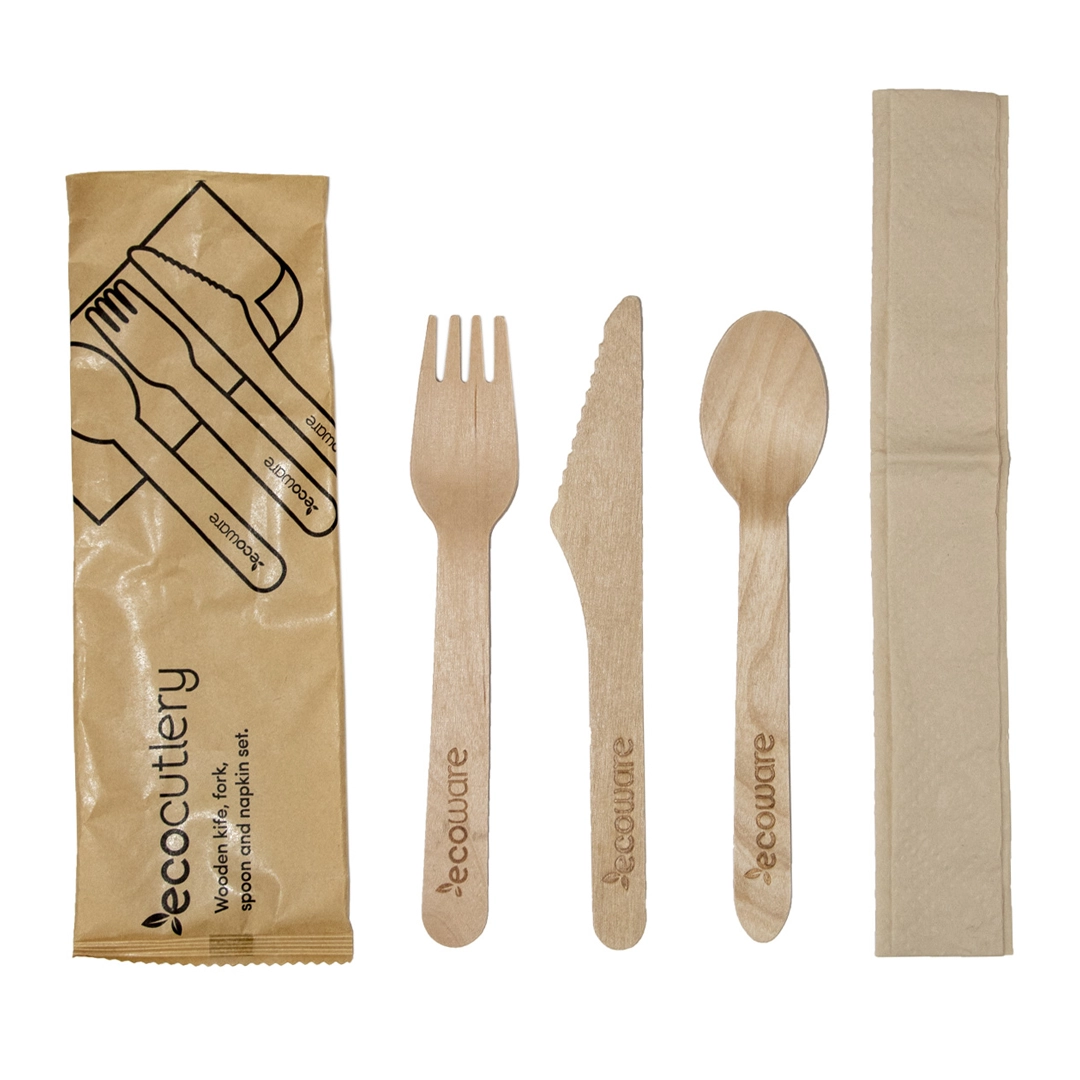 |
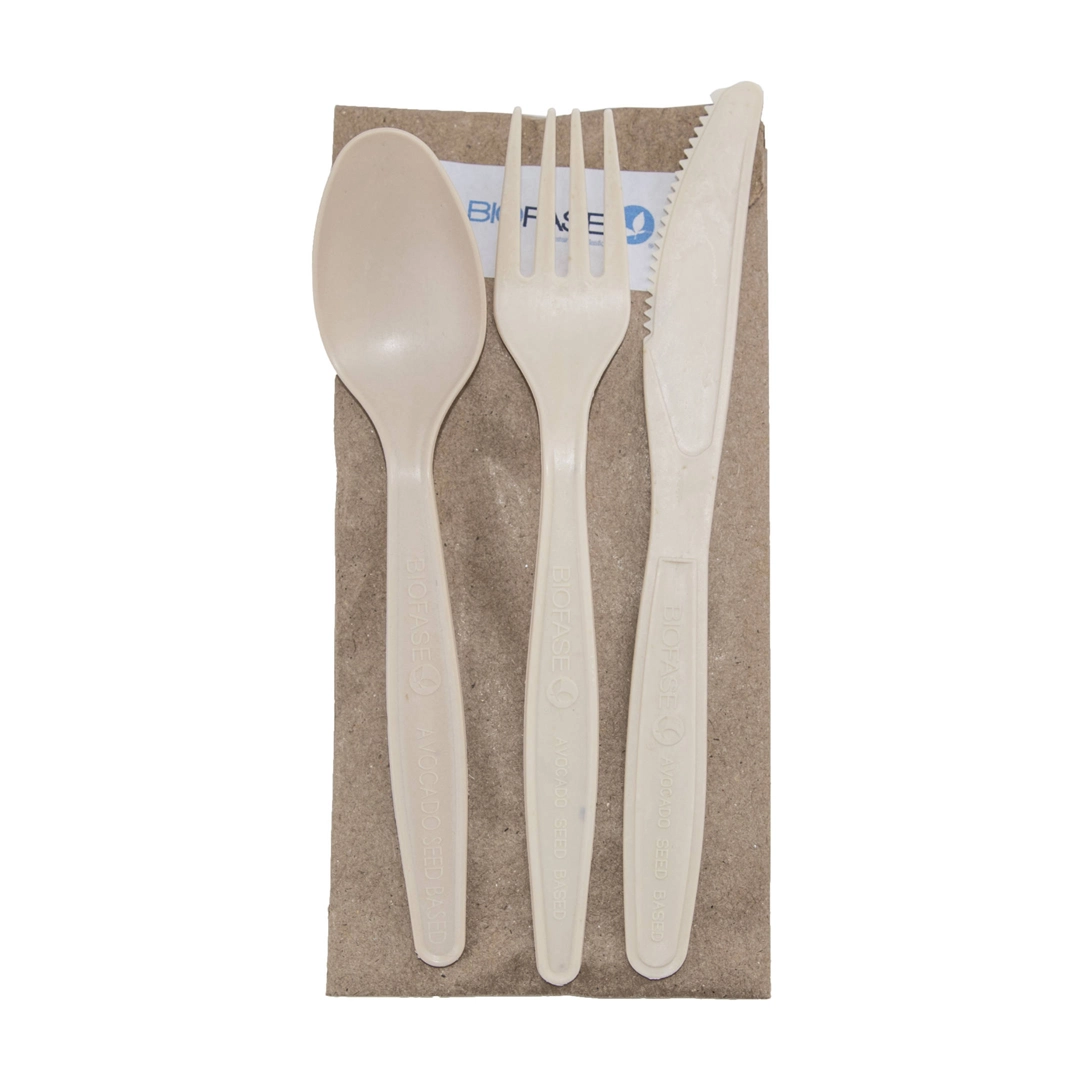 |
| Bioplastic PLA cutlery offers the same physical appearance and durability as heavy-duty plastic cutlery, but it is completely biodegradable and compostable. | Hard wooden cutlery is produced from renewable resources and is recyclable and biodegradable. Wooden cutlery is also less likely to snap than plastic cutlery. | Avocado seed cutlery is incredibly strong and durable. Produced from renewable resources, it’s the more sustainable alternative to standard, oil-based cutlery. |
For more eco-friendly cutlery options, have a look at our online selection
Recycled and Recyclable Paper Bags
Takeaway bags will always come in handy if you’re serving food at your coffee shop. Here are some popular coffee shop packaging bag designs:
Paper Grab Bags |
SOS Paper Bags |
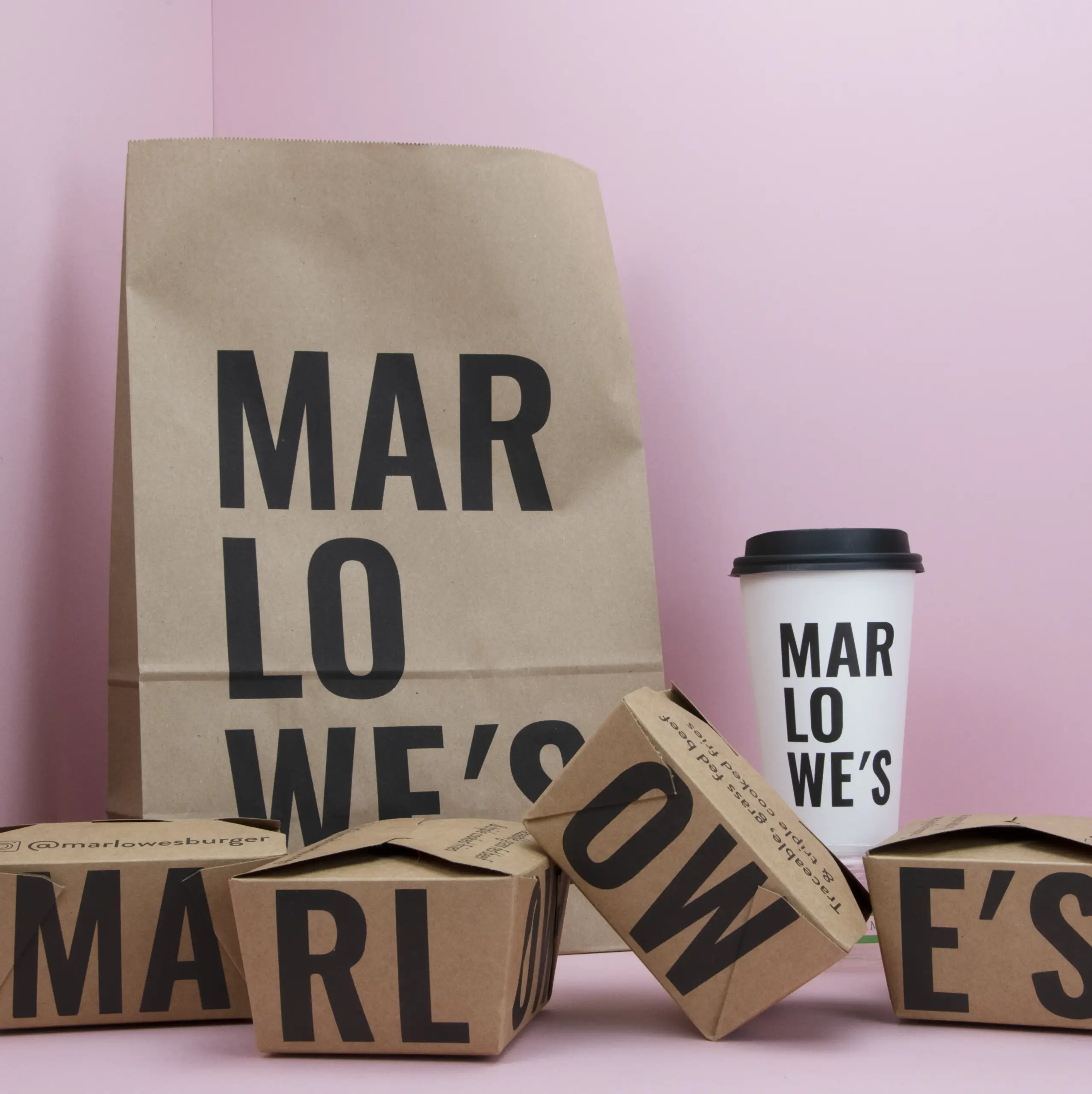 |
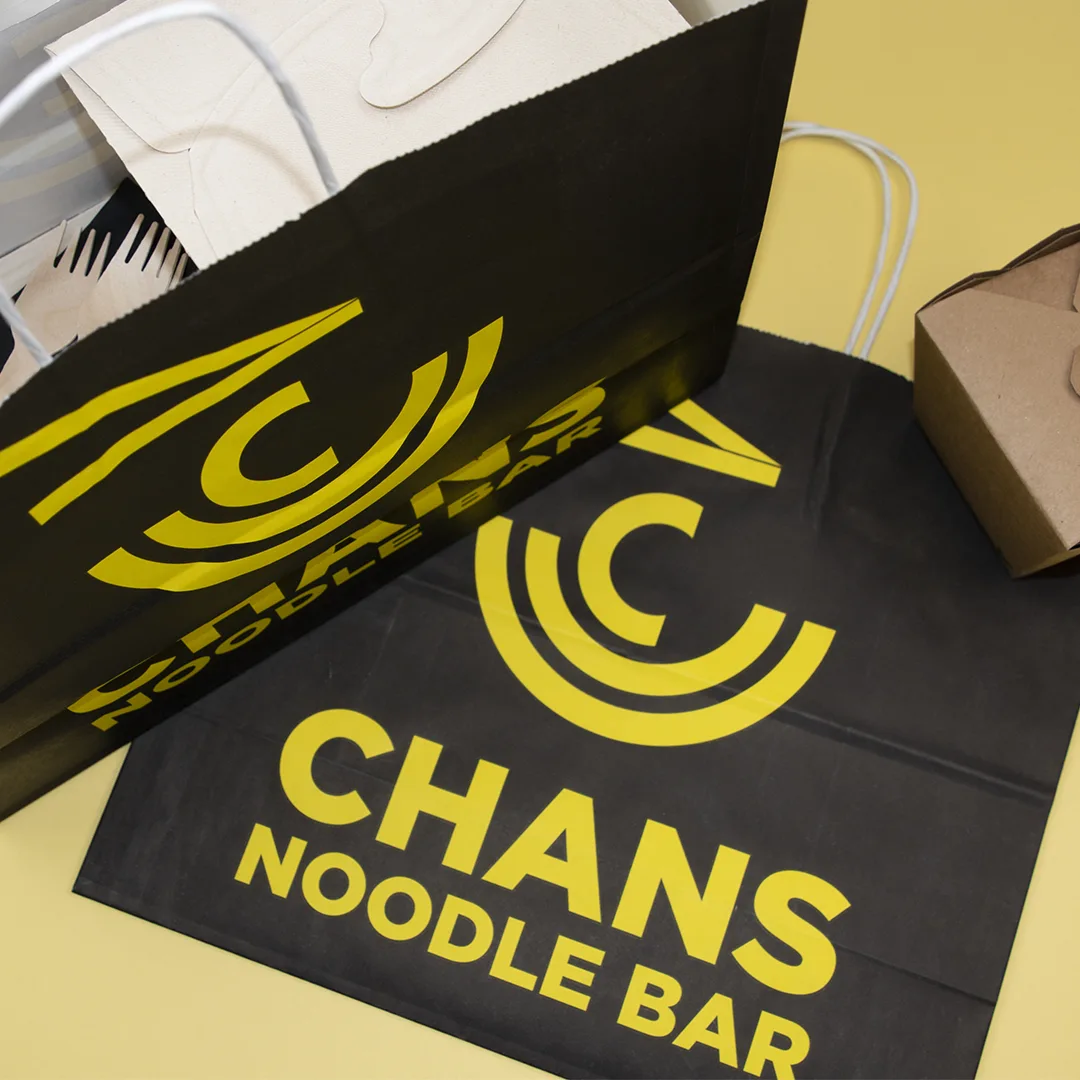 |
| The small to larger sizes of these grab bags makes them perfect for sandwiches, cakes and pastries. As the name suggests, these are suited to grab-and-take options. You can shop unbranded grab bags or have them branded with your artwork and logo. | The SOS-style bag is most commonly used by coffee shops, bakeries and delis. Its structure allows for small takeaway boxes and soup cups to sit level inside. These bags can also be branded and are available with a twisted handle or flat handle. |
Looking for more? We have many other types of sustainable paper bags and food carriers for you to discover
Buying Packaging for Your Coffee Shop with Us
Sustainable coffee shop packaging is the future — not only for the planet but for your business too. Stock up on eco-friendly packaging now and avoid additional costs like the plastic packaging tax and fines for using single-use plastic. With our range of café packaging supplies, you can give your customers an easy way to dispose of their waste while showcasing your commitment to sustainability.
Buy sustainable packaging for your coffee shop online, including biodegradable coffee cups and recyclable food packaging — and much more!

